1lumen selects and reviews products personally. We may earn affiliate commissions through our links, which help support our testing.
Speras EST MAX review
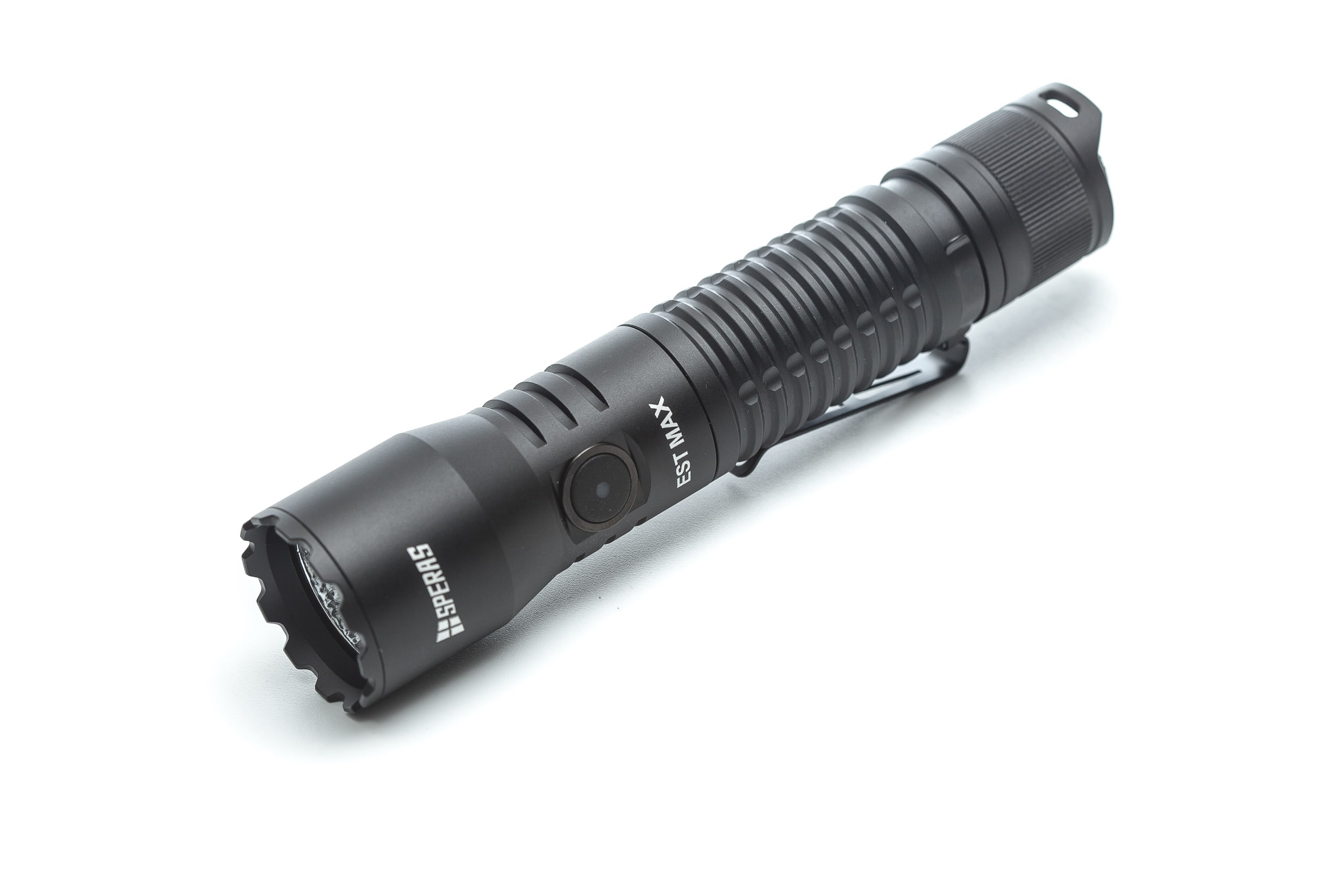
Speras EST MAX specifications
| Brand/model | Speras EST MAX |
|---|---|
| Flashlight category | Tactical flashlight |
| LED | 1*CREE XHP50.3 HD |
| Max. output | 2,500 Lumens |
| Max. beam distance | 279 meters |
| Max. beam intensity | 19,400 cd |
| Battery config. | 1*18650 |
| Onboard charging | USB-C |
| Modes | 4 |
| Blinkies | Strobe |
| Waterproof | IP68 |
| Review date | January 2024 |
Review intro:
Since 2020, we have reviewed over a dozen Speras flashlights at 1Lumen. Our first review was of the dual-cell thrower flashlight, Speras T1.
We will review the Speras EST Max, which is the successor of the Speras EST tactical-style flashlight we reviewed previously. Both flashlights have 2 switches, but the Speras EST Max has a higher maximum output and a longer beam distance. However, we will check its actual performance.
Let’s dive in.
Package quality.
The flashlight’s packaging appears identical to that of the Speras EST. It’s a basic cardboard retail box with a clear plastic window, allowing customers to see the flashlight inside. This feature is particularly helpful when selling the product in stores as it gives customers a clear view of the product they are interested in purchasing instead of simply relying on a picture.
So what’s inside the box:
- The Speras EST MAX
- 18650 battery (proprietary)
- USB-C charging cable
- Lanyard
- O-rings
- Manual
Don’t forget to remove the insulating film between the battery and flashlight before your first use. Without removing it, the flashlight will not turn on.
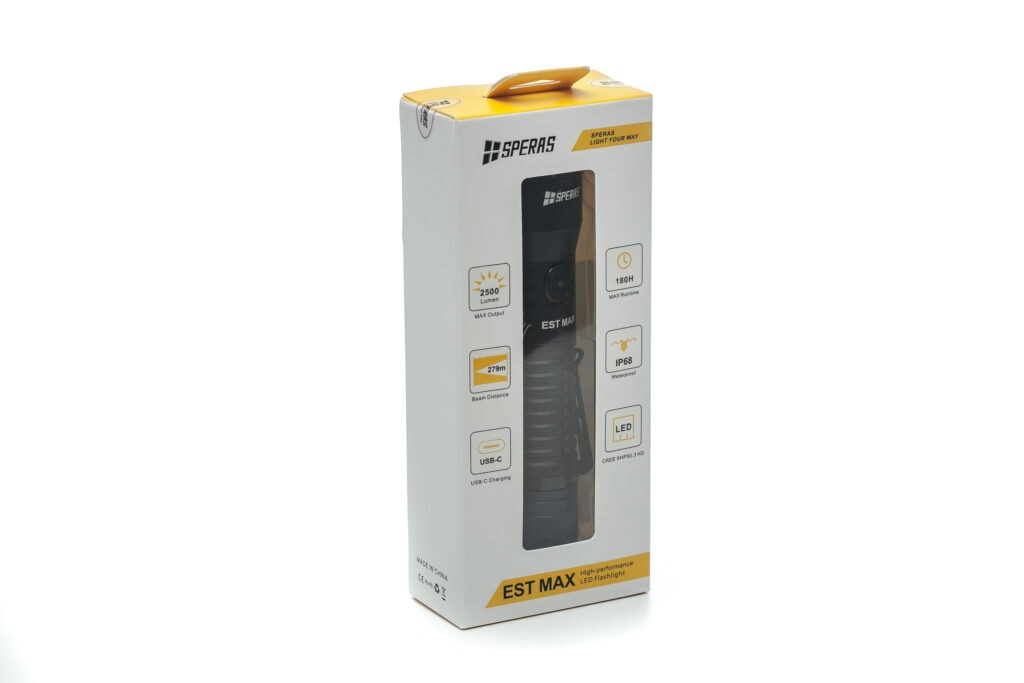
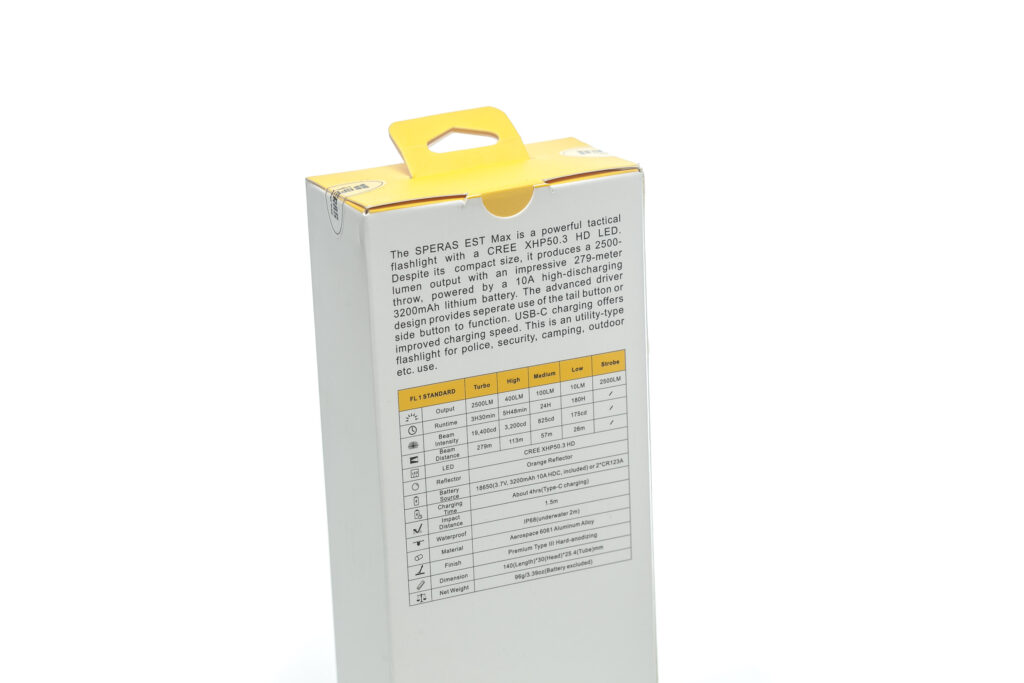
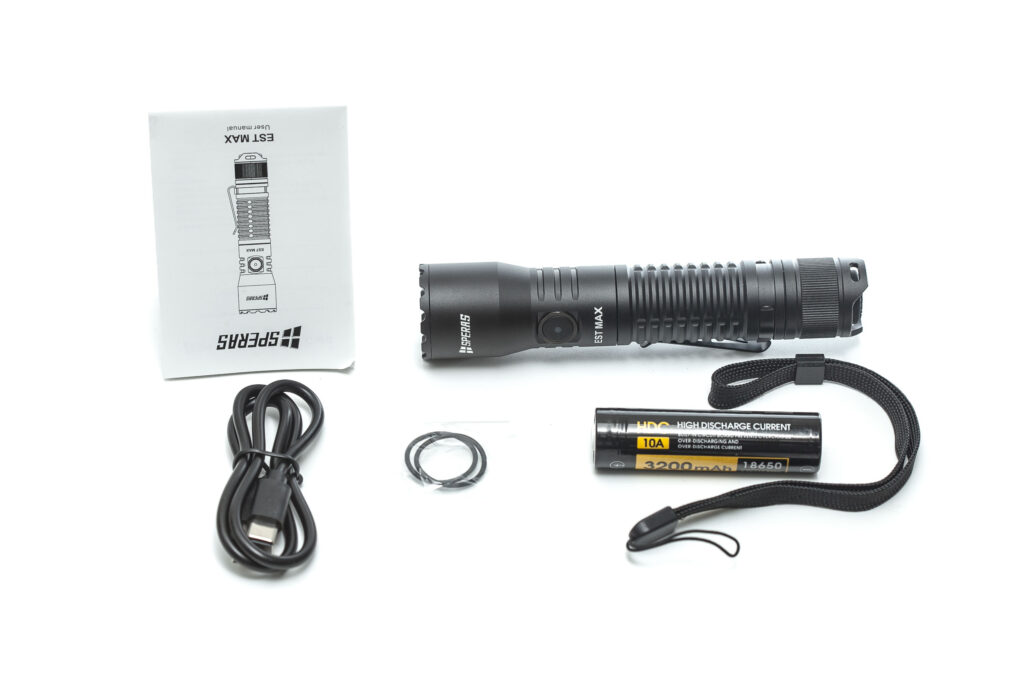
Flashlight in use, Build Quality, and Warranty
The EST is a tactical flashlight with a large tail switch and an electronic switch for changing modes.
It’s very important to note that they can be used interchangeably. The rear switch is a tactical-style switch, giving you access to only 2 modes: Turbo and Strobe. You can not change the output with the rear switch. I quite like that for a tactical-style flashlight. On the contrary, the side switch gives access to Low, Medium, High, and Turbo mode.
It’s a long-press for on, a long-press for changing modes, but a single click to turn it off. That could be a little confusing for some people who are not used to this type of UI.
But, like with most UIs, if this is your main flashlight, you will soon get used to it. More information can be seen in the UI section of this review.
To carry your EST MAX, Speras gives you basically 2 basic options: using the pre-attached pocket clip or the included lanyard. If you don’t like those, you can always carry it in a pocket, or use your own holster if you’d prefer to carry it that way.
While handling, the tactical rear switch is mainly for tactical use in the overhand position. The side switch is more for EDC-style use, in the underhand position.
Something that I appreciate about Speras is the optional accessories they sell. For the Speras EST MAX, you can get a USB-C remote pressure switch, a flashlight mount (for your bike), or a dedicated holster. So, if you don’t have any of those yet, order it.
If you’ve never had a Speras flashlight before, you’d be surprised at how well this light is built. It has an interesting battery tube design and a beautiful, almost satin-looking black anodization. While the battery tube has no rough knurling, the wider head and pocket clip prevent you from dropping the light so easily.
The only part that can be unscrewed or removed is the tailcap. I understand that from a business perspective, but some modders may want access to the inner parts. Not me, though. The threads are anodized, giving you a quick way to turn the light off or lock it by unscrewing the tailcap just slightly.
Having all these features, I can definitely say this is a great tactical flashlight, but it is good for EDC as well. Some activities that I can see people using the EST MAX for include camping, hiking, biking (with the optional adapter), guard work, or even first responders.
Warranty:
1. Within 30 days, free replacement. SPERAS will provide 30 days free replacement service of purchase for any manufacturing defects if problems come into being in normal use; We will replace it with the same model. If the model has been discontinued, customers will receive a product with similar or improved model.
2. Within Warranty time: Usually we provide 5 years warranty, some may provide lifetime limited warranty( for example E1). Within the warranty time, any defects please contact local dealer or distributor for warranty support. We will repair or we replace a new product for you according the defects.
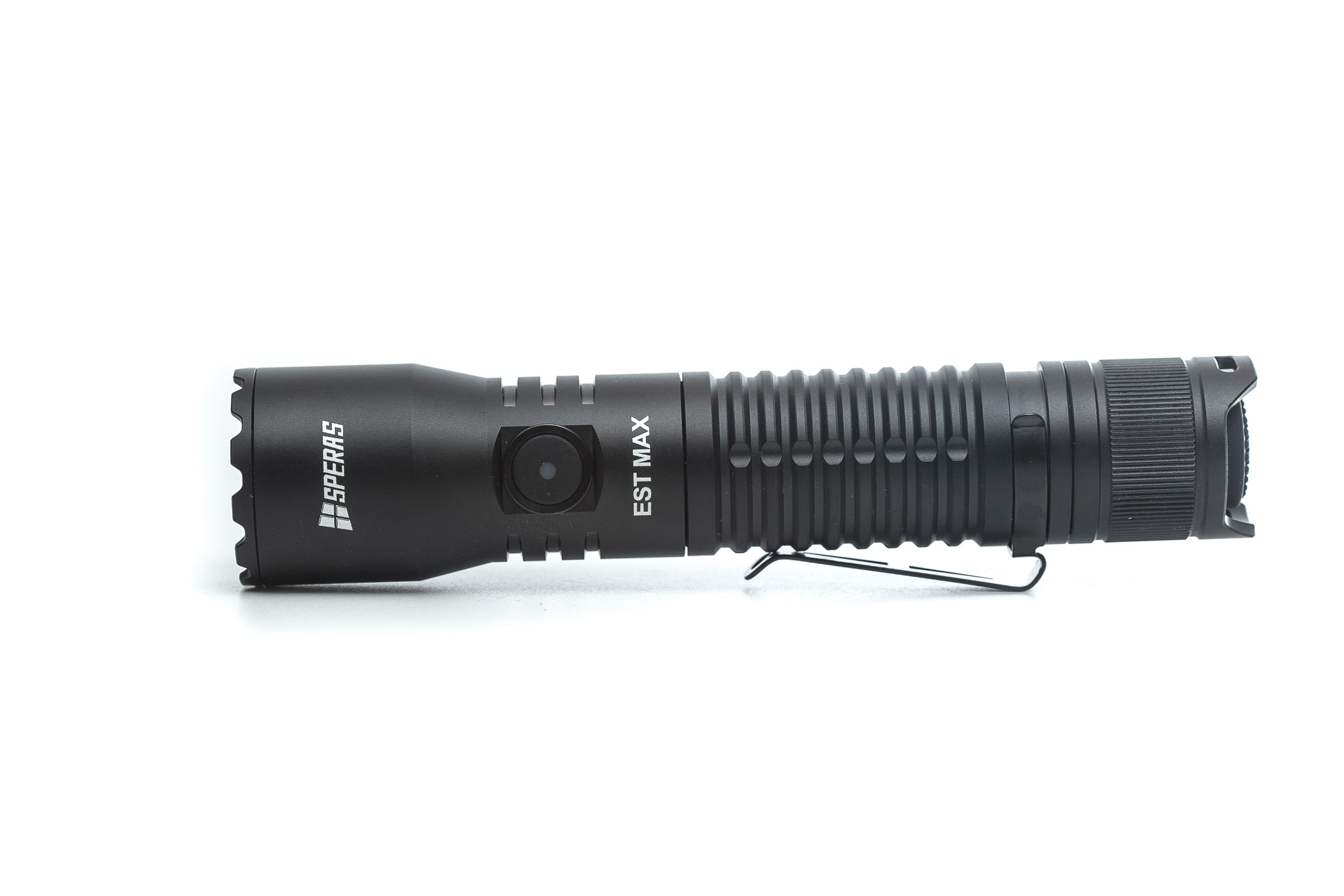
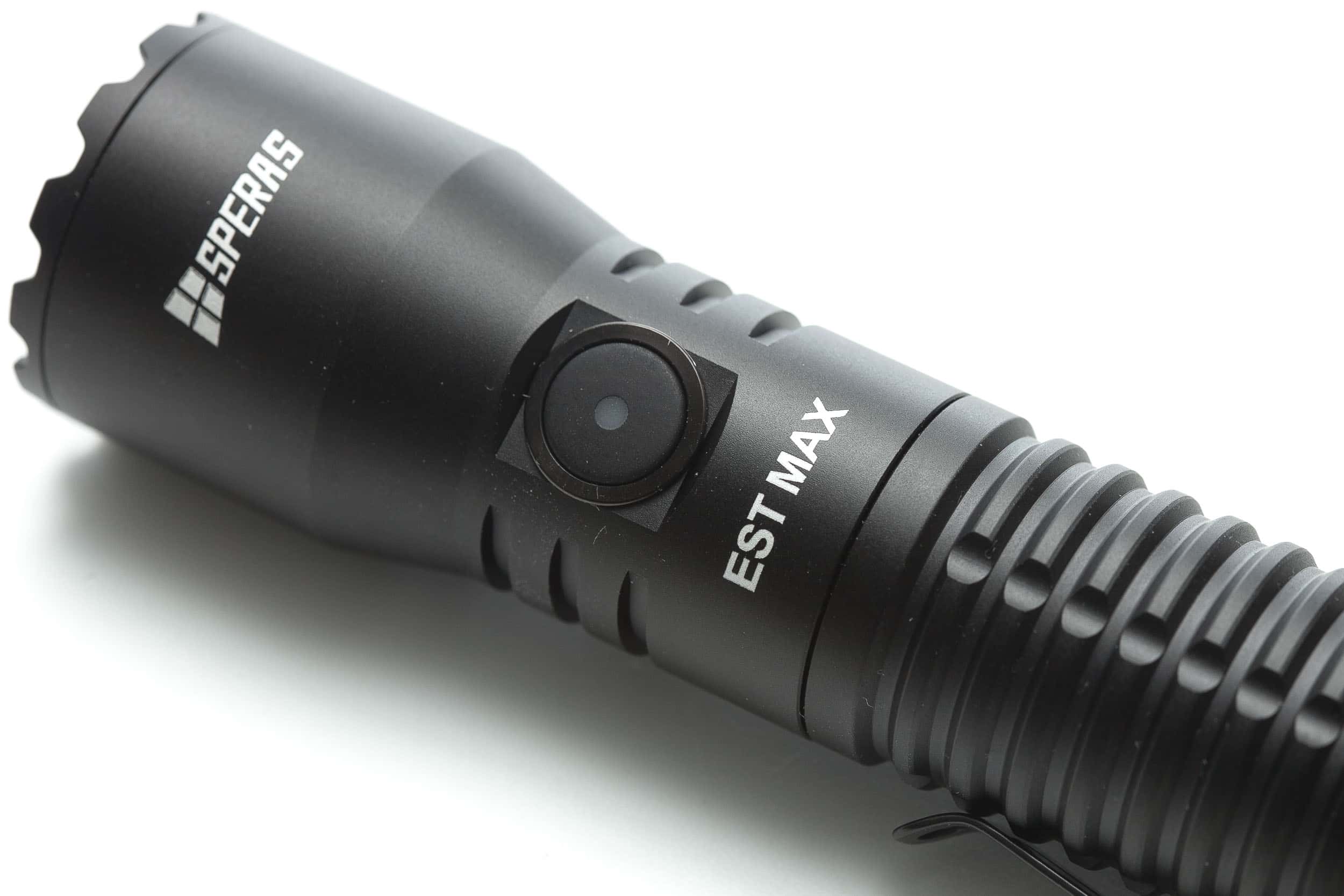
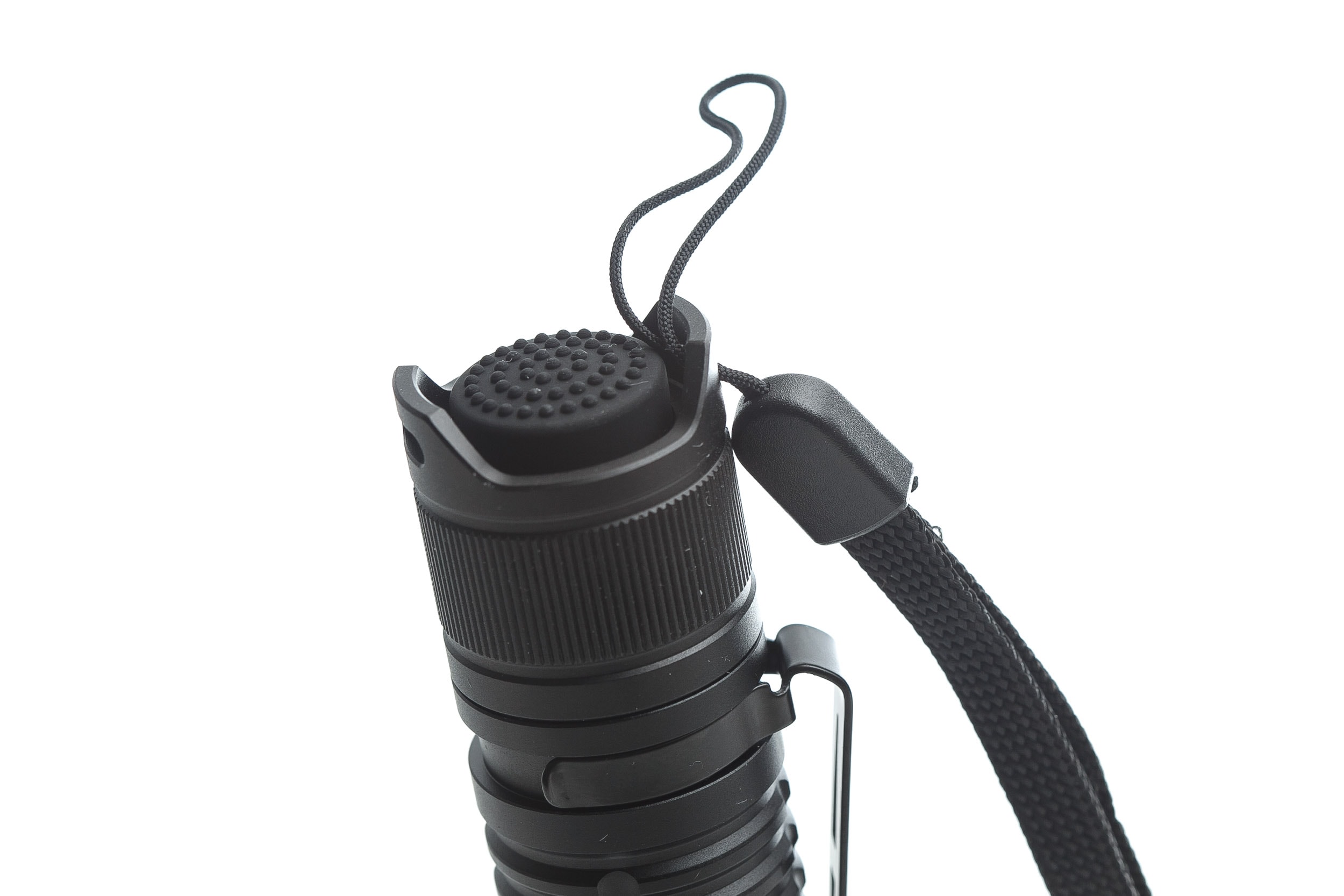
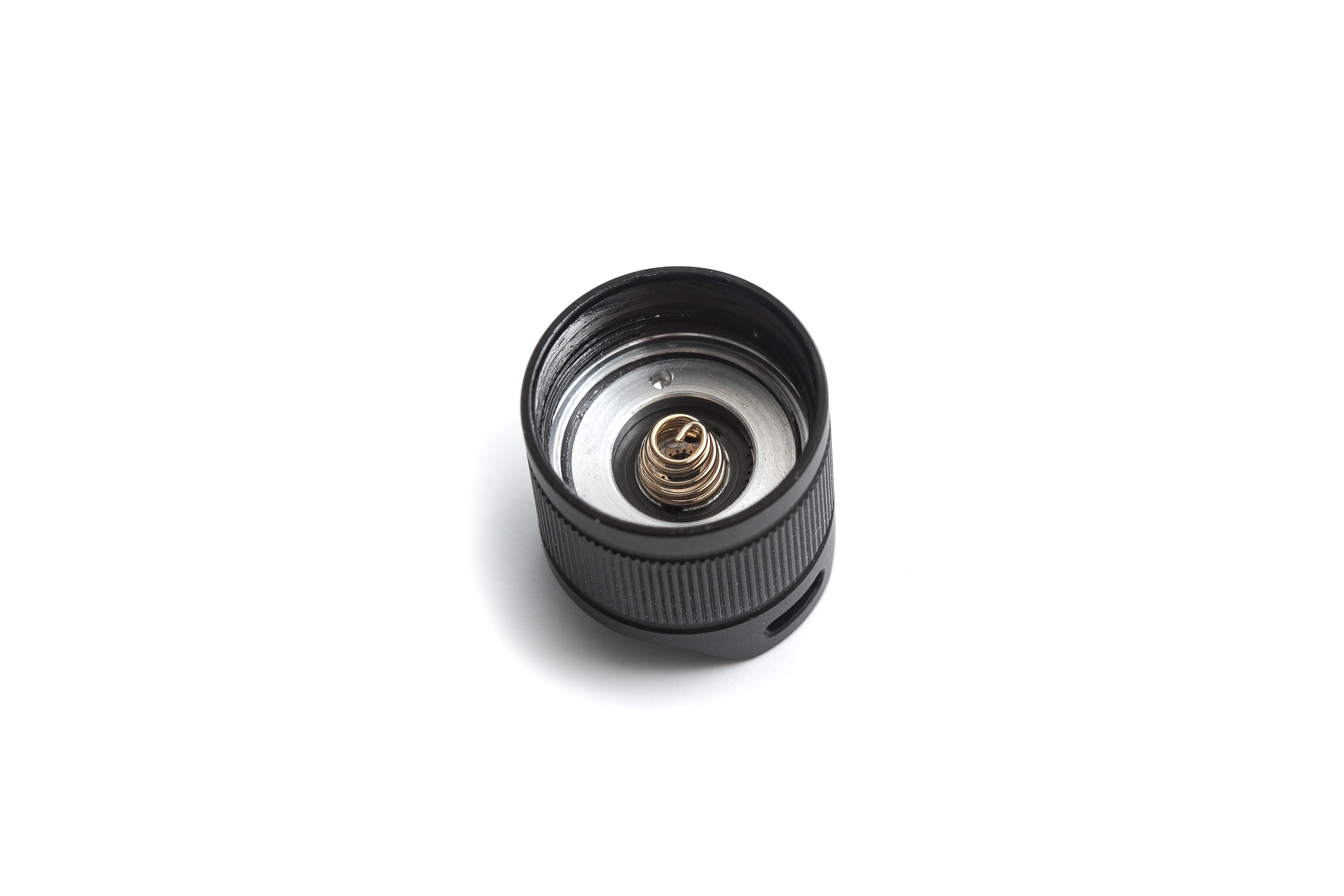
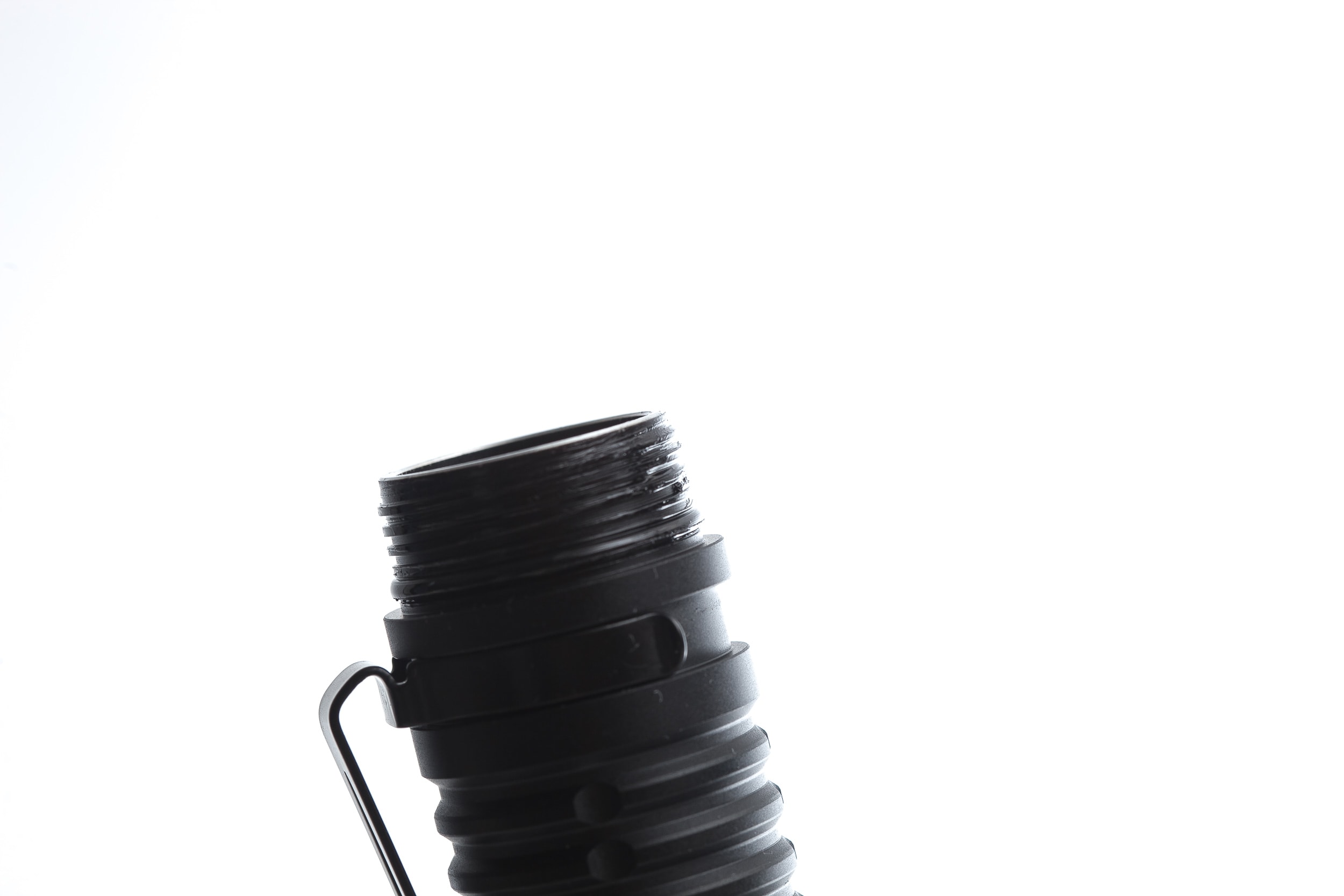
LED, Lens, Bezel, Beam, and Reflector
Another update Speras made is the type of LED. With the original Speras EST featuring a Luminus SST40, the EST MAX now uses a CREE XHP50.3HD. This is probably the main reason why the maximum output increased from 1900 lumens to 2500 lumens.
The head is also larger, helping the beam distance increase from 211 meters to 279 meters.
This is due to the larger head size and the change from a TIR optic to a reflector.
The reflector is relatively deep, which I assume could be around 2-2.5 centimeters. It has a soft-orange peel coating, smoothening out some unwanted beam inconsistencies. There are none, but it could help make the beam a bit nicer.
To protect the reflector, they added an AR-coated (anti-reflective) glass lens and a pointy bezel that also serves as a window breaker.
When you look at the beam itself, there is a clear hotspot with plenty of spill and a soft (but distinct) transition in between.
Spectral measurements:
I used a Sekonic C800 spectrometer to measure the flashlight’s beam center at a distance of 5 meters to get the following spectral measurements.
| Mode: | CCT: | CRI Ra: | duv |
|---|---|---|---|
| Turbo | 7031K | 70.9 | -0.0004 |
This basically means that the beam is pretty cold (7000K is cold), has a pretty average CRI rating (meaning that the Color Rendering is pretty average), and the tint (which basically shows whether a beam has a ‘pinkish’ or ‘greenish’ hue) is very neutral.
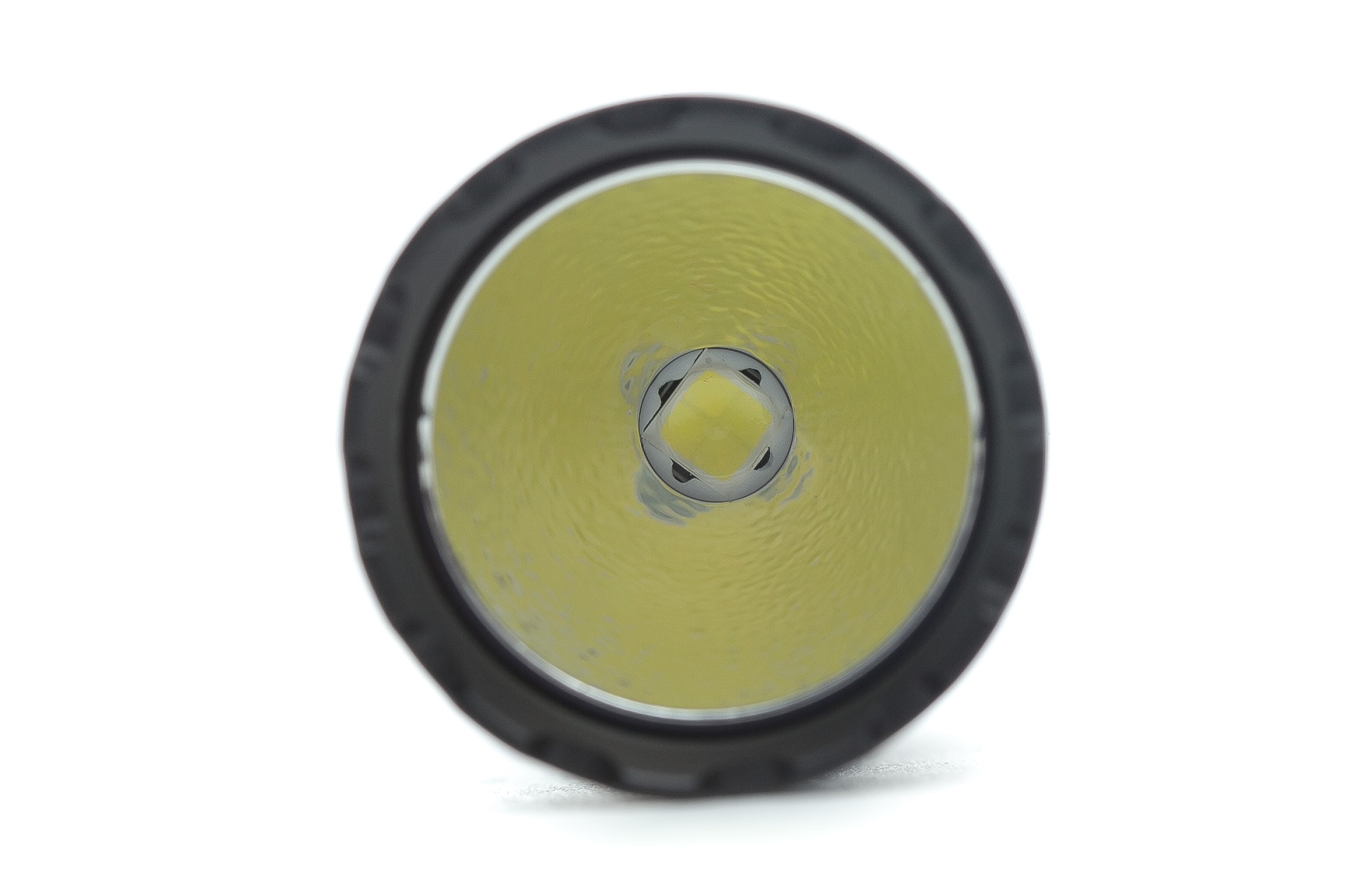
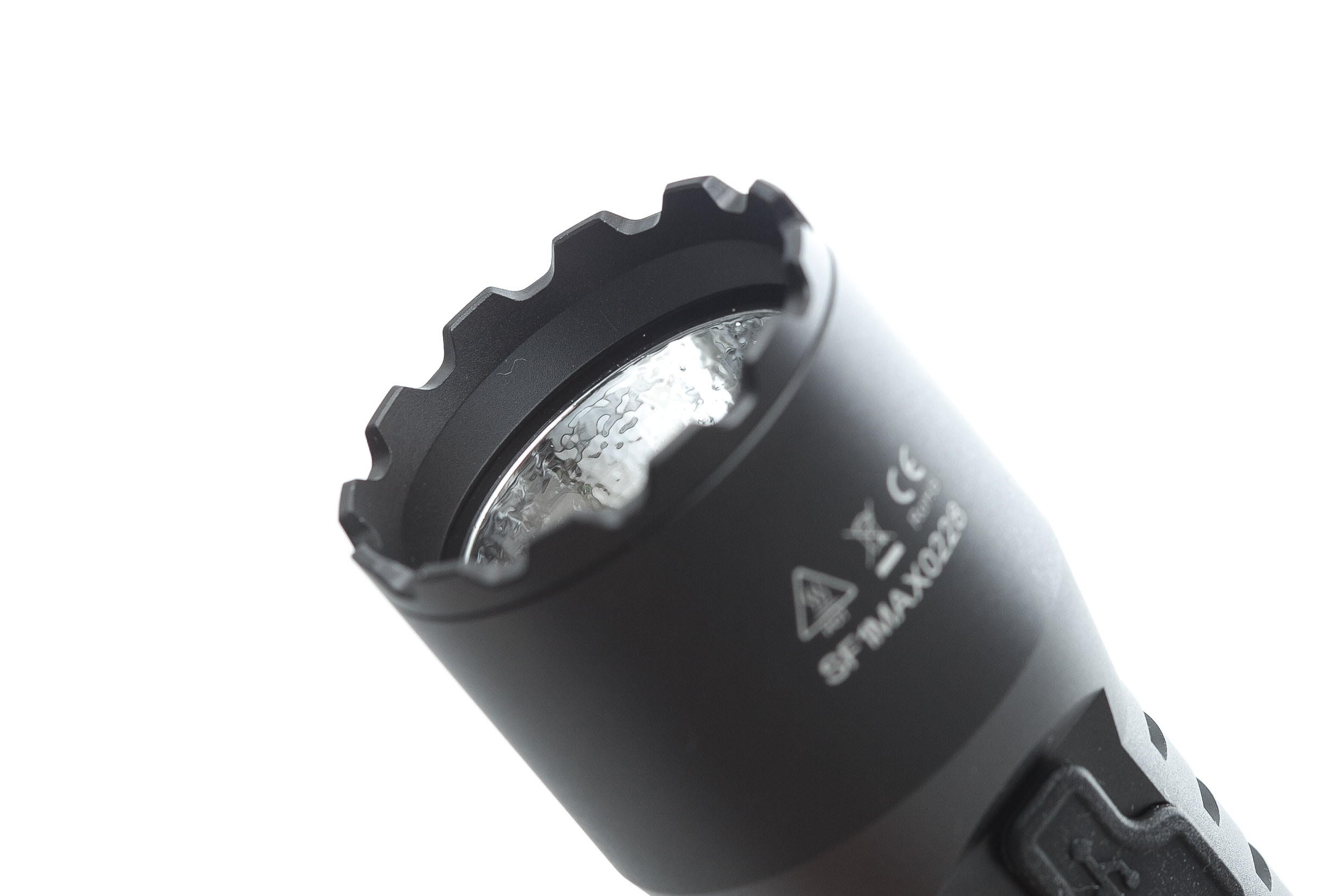
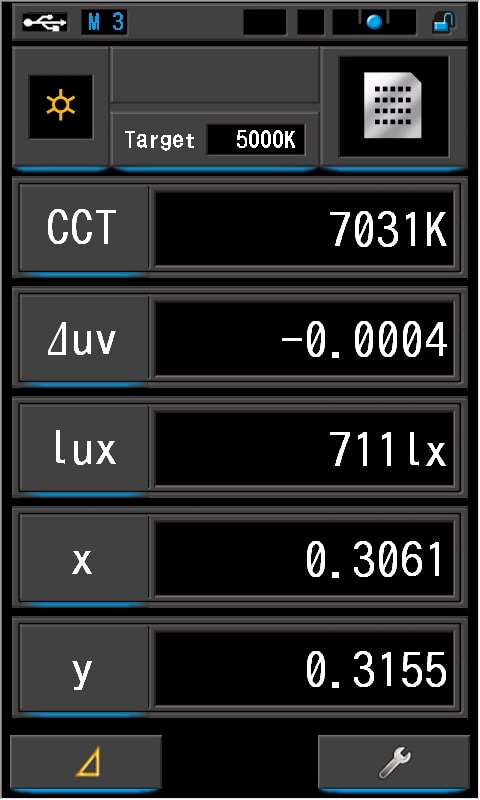
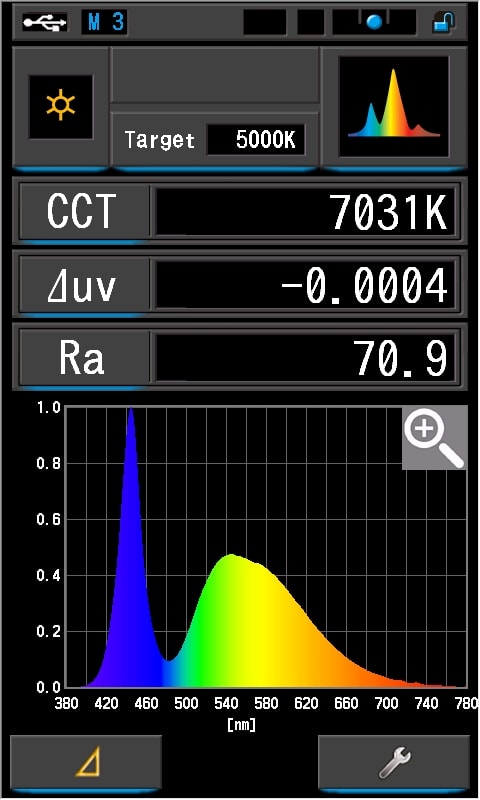
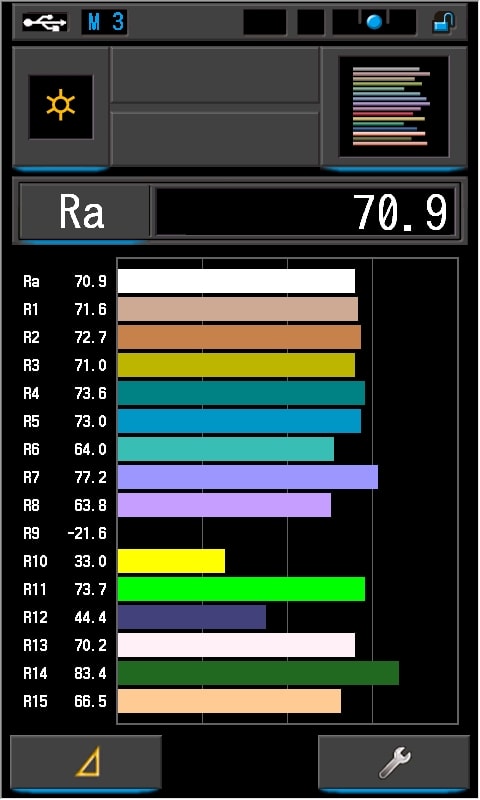
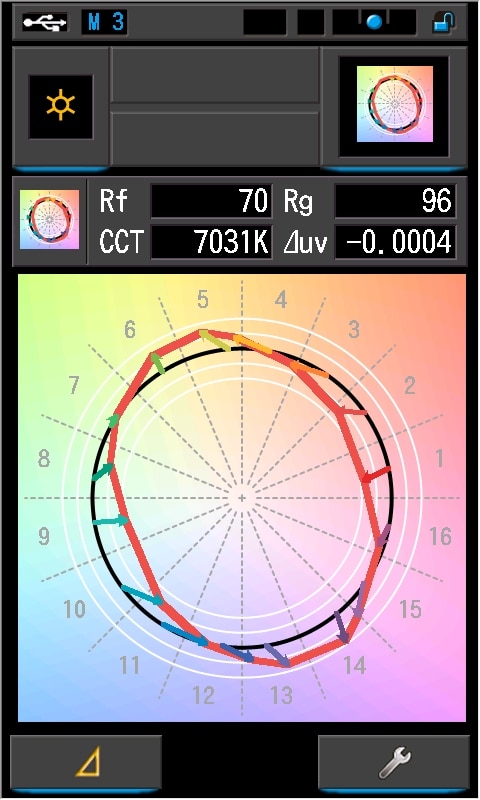
Dimensions and its competition
Dimensions:
| Speras EST MAX | Millimeters | Inches |
|---|---|---|
| Length | 140 mm | 5.5 in |
| Head diameter | 30 mm | 1.2 in |
| Body diameter | 25 mm | 1 in |
Dimensions are rounded to the nearest millimeter and the nearest tenth of an Inch.
Weight:
| Speras EST MAX | Weight in grams | Weight in oz. |
|---|---|---|
| Without battery: | 95 g | 3.4 oz |
| With battery | 143 g | 5 oz |
Weight is rounded to the nearest gram and tenth of an Oz.
Speras EST MAX Flashlight comparison
Size compared to other Tactical flashlights (18650)
From left to right: Weltool T2R, Fenix TK11TAC, ThruNite TN12 v4, Speras EST MAX, Olight Warrior Mini 2.
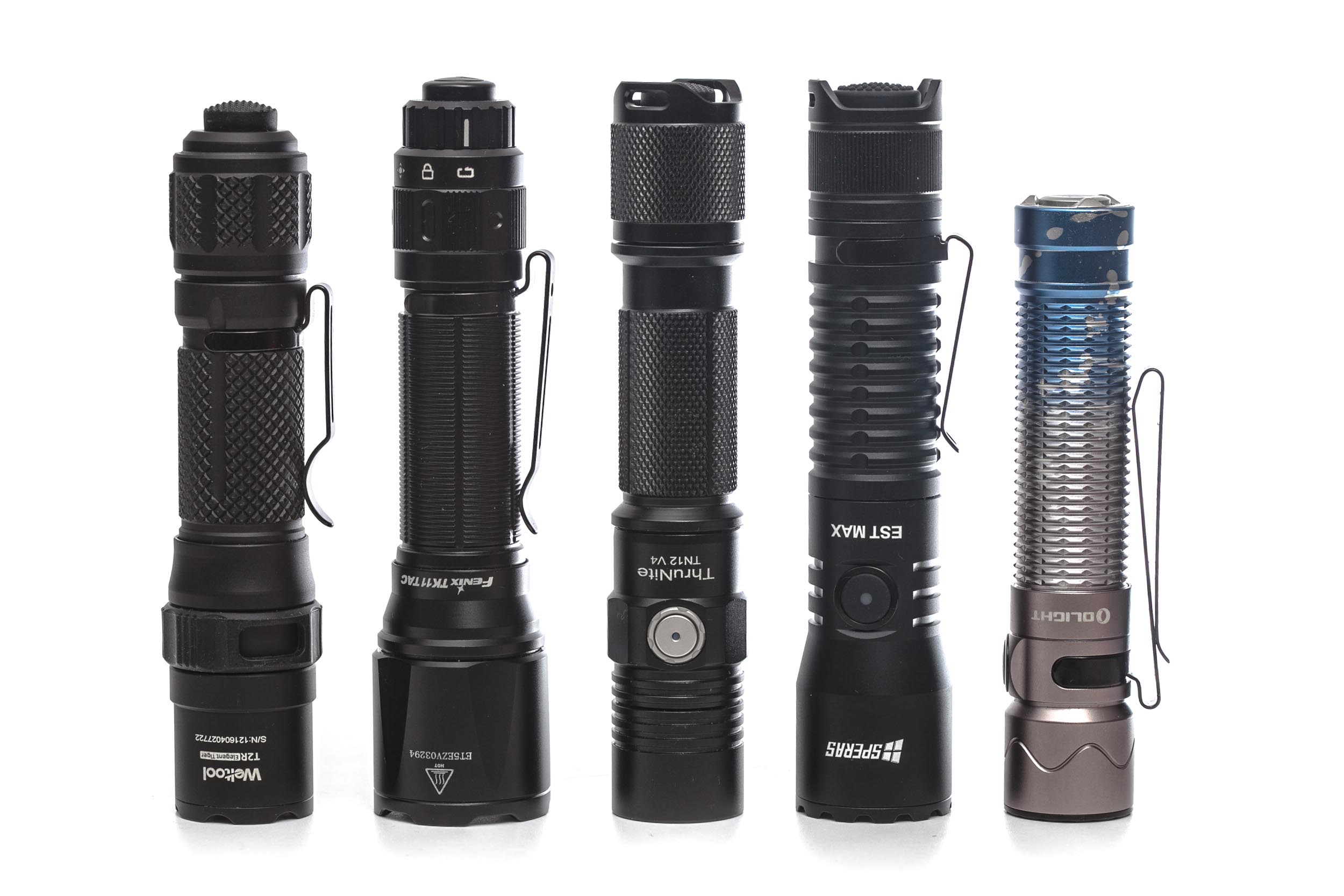
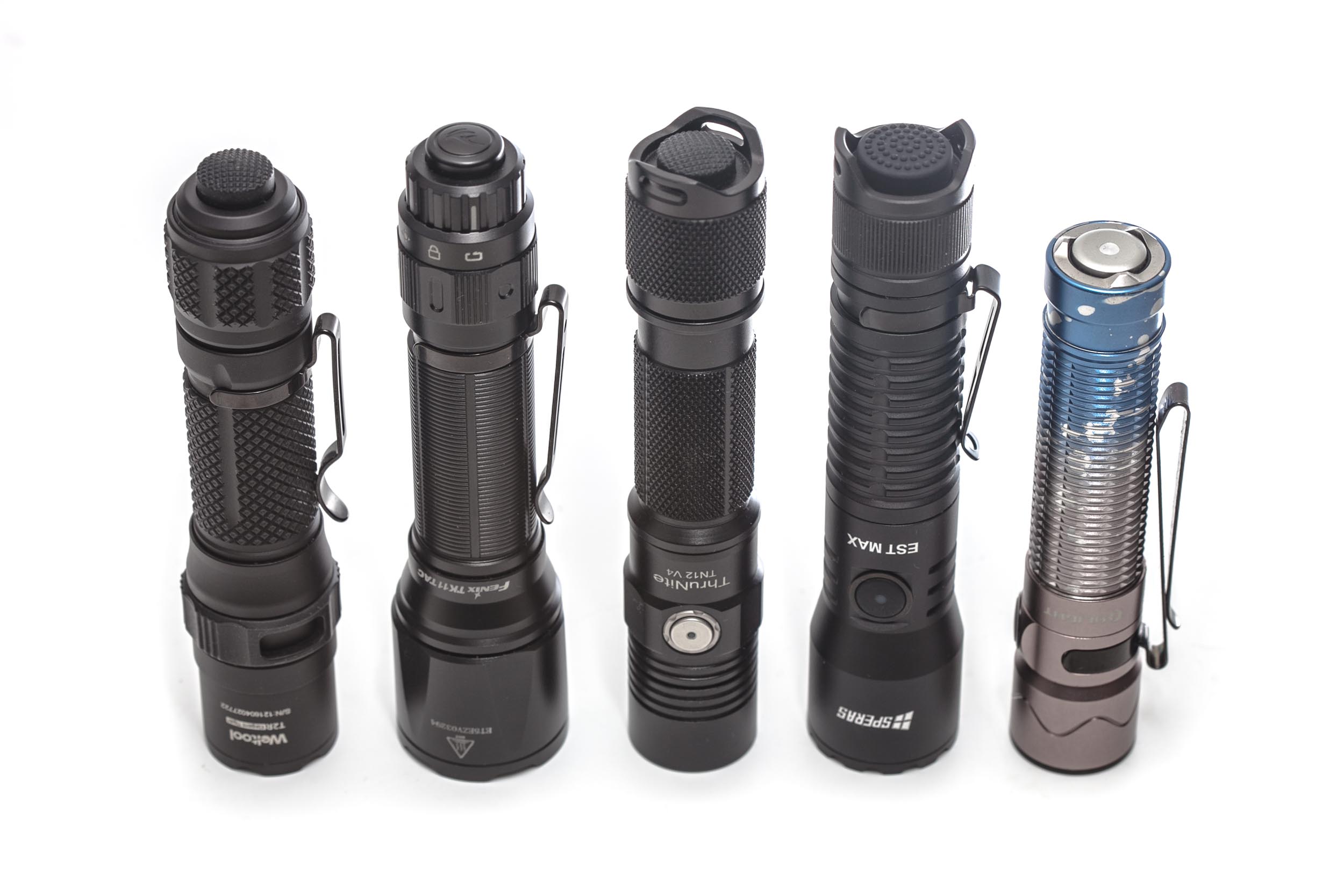
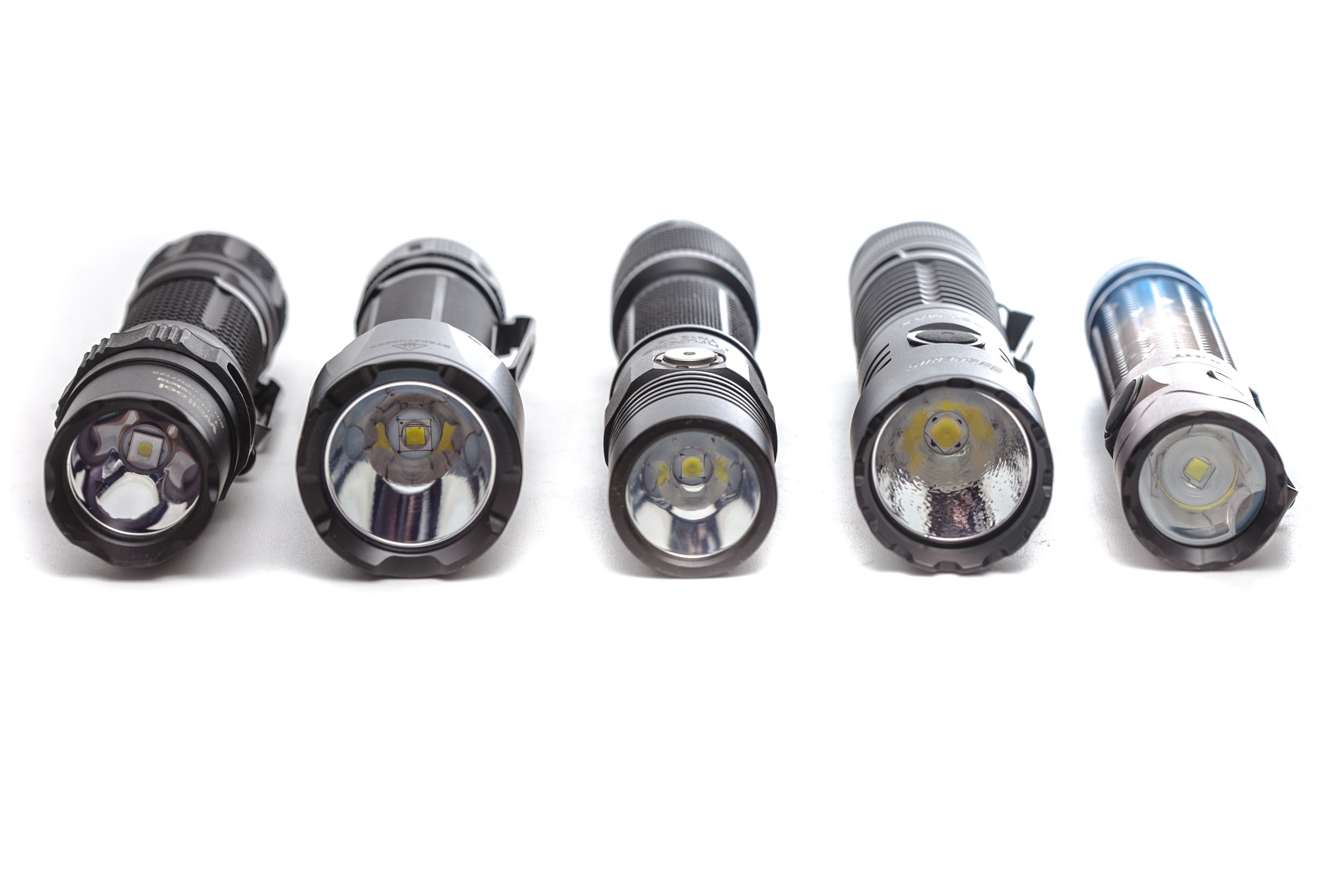
Speras EST MAX UI : User interface and driver
The Speras has 2 separate switches with 2 unique UIs. There’s a mechanical forward clicky switch on the rear and an electronic switch on the side, with the rear switch for Turbo and Strobe and nothing else, and the side switch for low, medium, high, and Turbo.
You can use the switches interchangeably, but to a limited effect, it seems. But I’ll explain that at the bottom of this section.
The available main modes:
- Low, Medium, High, Turbo
The available special modes (blinkies):
- Strobe (alternating frequency)
How the UI works when the flashlight is still turned OFF:
- Rear switch half-press: momentary on Turbo
- Rear switch 2 half-presses: Strobe
- Rear switch 1 click: continuous Turbo (or if half-pressed twice, continuous Strobe)
- Side switch: Single-click: nothing
- Side switch double click: Strobe
- Side switch triple-click: nothing
- Side switch press and hold: turns on in last used mode (include Turbo if you used the rear switch)
How the UI works when the flashlight is turned ON:
- Rear switch half-press: nothing
- Rear switch 1 click: OFF (except if you turned it on with the side switch.. if you do so, it will just turn on in Turbo)
- Side switch: Single-click: OFF
- Side switch double click: Strobe (contrary to what the manual states)
- Side switch triple-click: nothing
- Side switch press and hold: run through the modes from Low to Turbo
Shortcuts within the UI:
- To Turbo: Rear switch single click
- To Low: N/A
- To Strobe: double tap rear switch
Mode memory:
- Yes, see more info at the bottom
Blinky modes:
- Only a strobe mode. This can be activated by double-tapping the rear switch or double-clicking the side switch. Strobe mode is not memorized, it will remember Turbo mode instead.
Low battery warning:
- The side switch has a little indicator LED showing the charge status.
- 70-100%: green solid
- 30-70%: yellow solid
- 10-30%: red solid
- 1-10%: red blinking
Lock-out mode:
- None that I could find. But you can unscrew the tailcap for a lockout.
PWM:
- Not visible by eye
Firmware / UI Conclusion:
- The UI is easy to use after a while. But if you are used to other UIs, it can be a bit confusing with a long-press for ON, but a click for OFF.
- There is mode memory for the last used mode! At all times.. So if you use the side switch for the normal modes and you turn it off, it remembers the last used normal mode (low, med, high, or turbo). But if you decide to use the rear switch for Turbo or Strobe… this mode is also remembered with the side switch (if you used Strobe, it will remember Turbo). This could be a pro (for some) and a con (for some) at the same time.
Speras EST MAX Charging and batteries
Speras ships their EST MAX with a 3200mAh 18650 lithium-ion battery inside the light. To use your flashlight, you need to remove the insulating film first.
The battery measured 3.55V at arrival, a great voltage for long-term storage and shipping. But it doesn’t have a clear product code, but it says 3200mAh, HDC 10A. What surprised me a bit was the nature of this battery because it’s not a ‘normal’ 18650 battery but customized (proprietary).
Charging happens inside the flashlight via its USB-C charging port. Charging the battery should take 4 hours, according to the manual. In my test, I measured 4 hours and 14 minutes the first time and 4 hours and 16 minutes another time.
You can see from the runtime tests that I stopped the runtimes early because I feared the battery discharged too deeply. Fortunately, it wasn’t, and each time I measured the battery after each runtime, it measured between 2.83 and 3.03 volts. So, the charge time will depend on how deep you discharged the battery.
Besides 18650 batteries, the manual also mentions it can use 2*CR123 batteries, but that’s a mistake. It does not accept normal 18650 or CR123 batteries!
| Charge type | Fits | No fit | Avg. Charge time |
|---|---|---|---|
| Flashlight with onboard USB-C | custom Speras 18650 | all other 18650 | 4h 15min |
I was able to use an Olight 18650 battery in the EST MAX, although it is not recommended. If you have multiple Olight batteries with similar features, you may also be able to use them. Please note that I am referring specifically to the 18650 battery with both terminals located on the front.
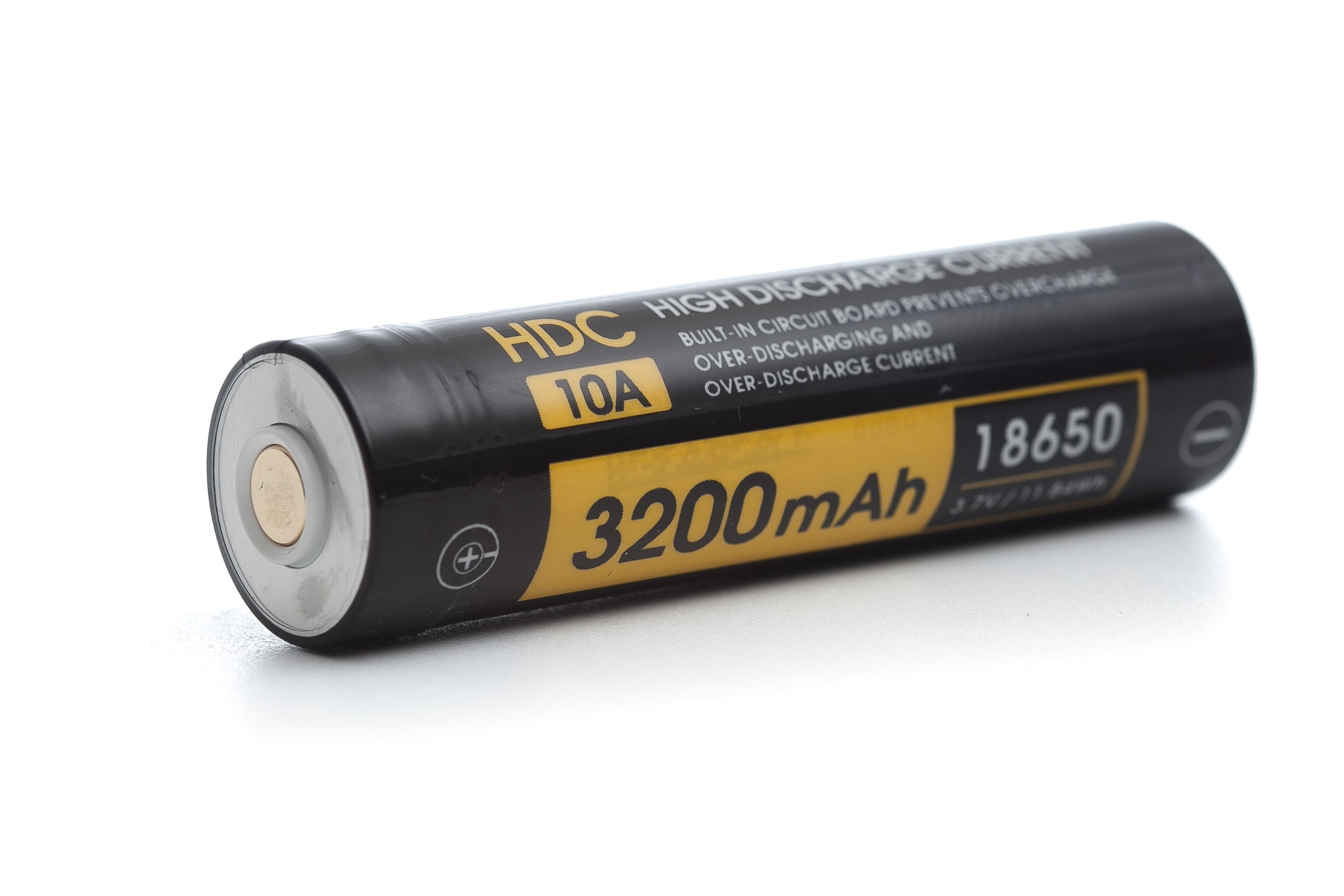
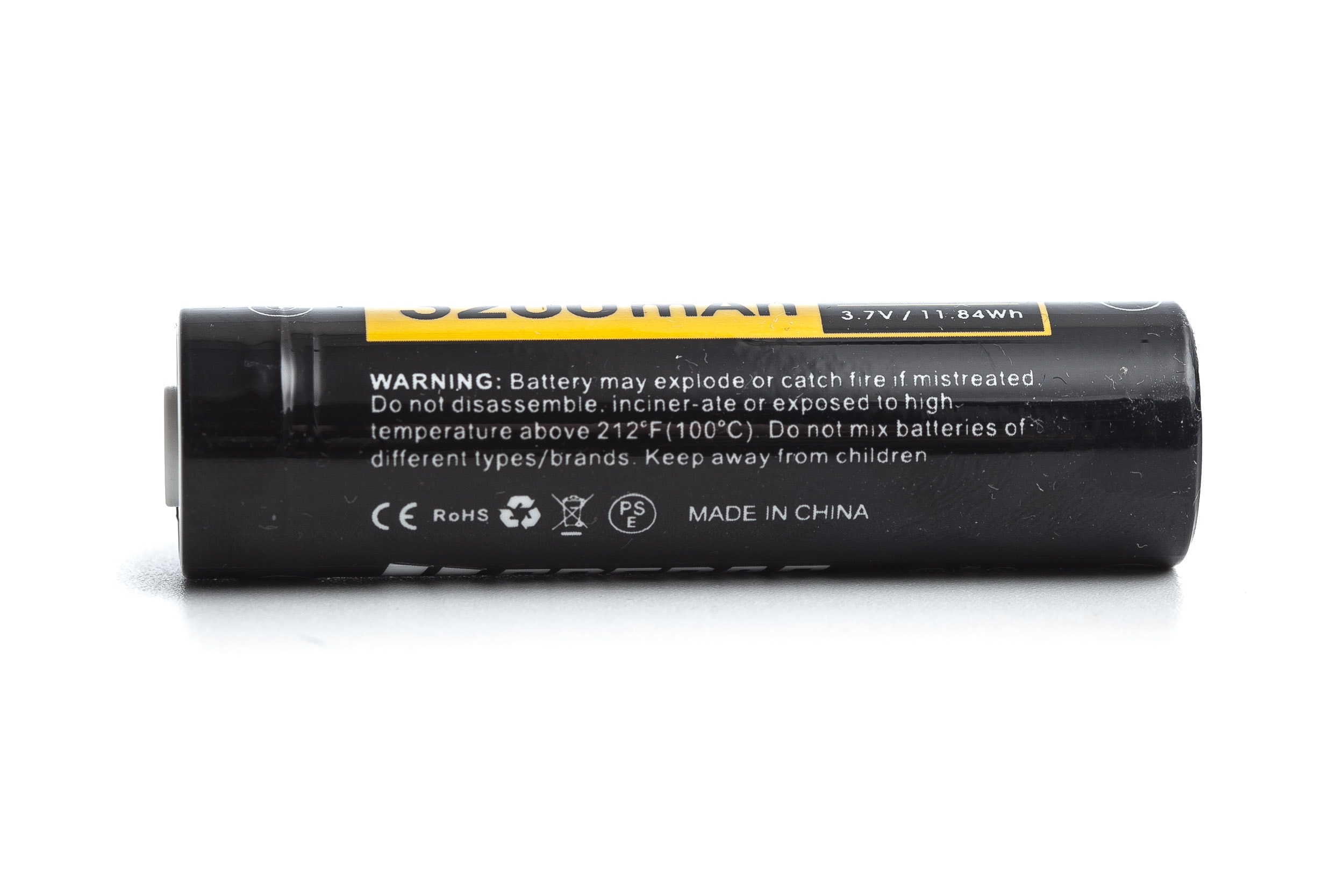
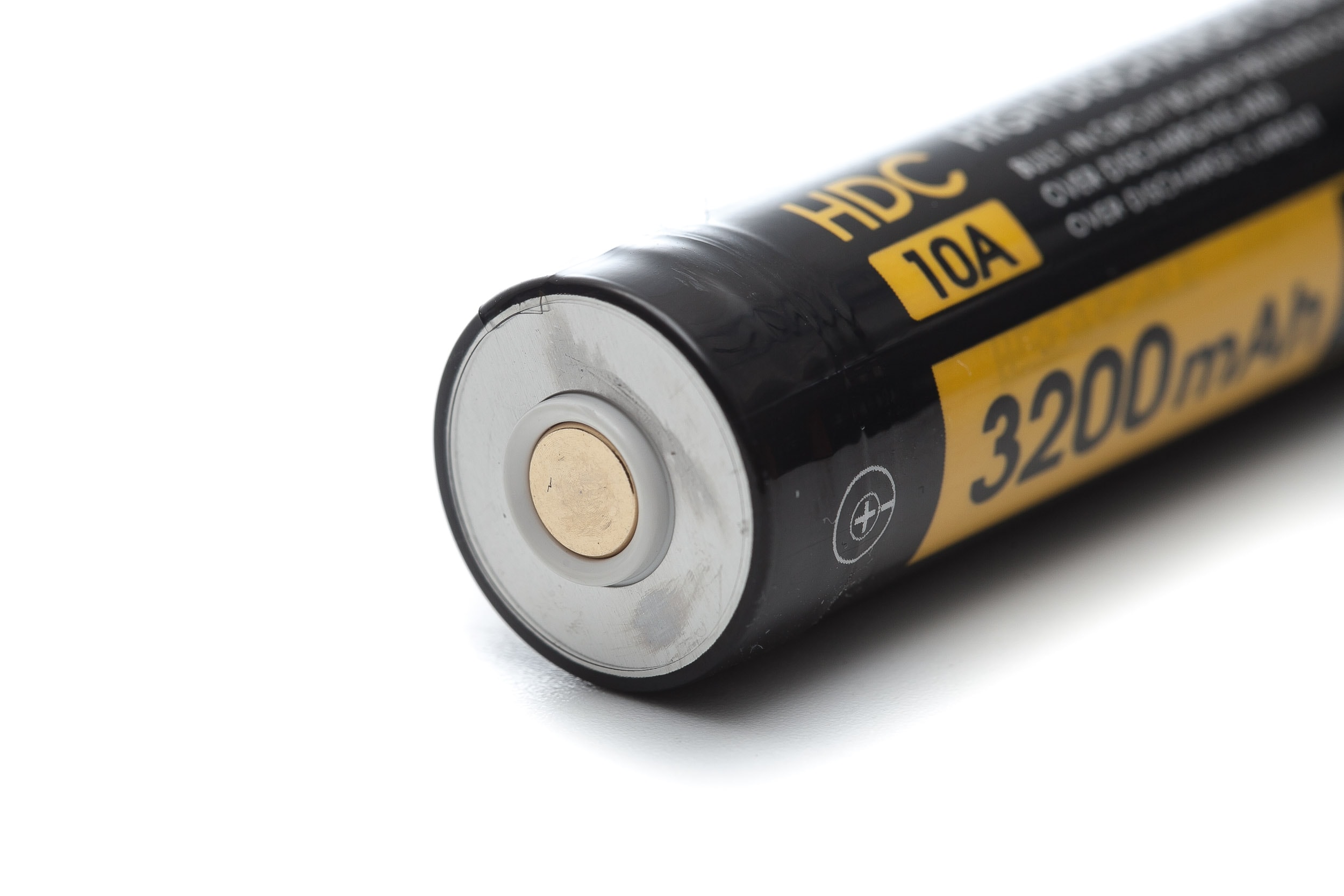
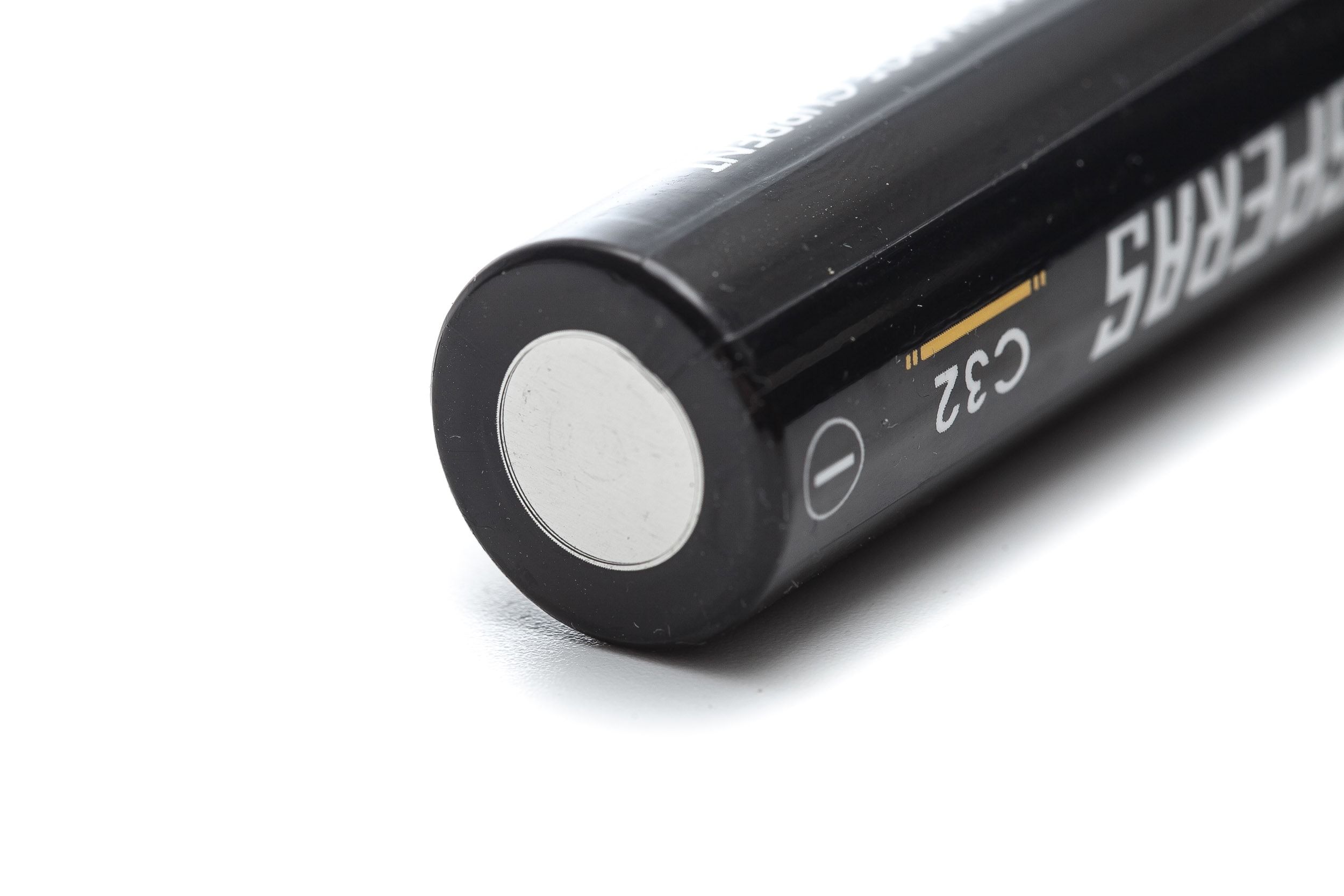
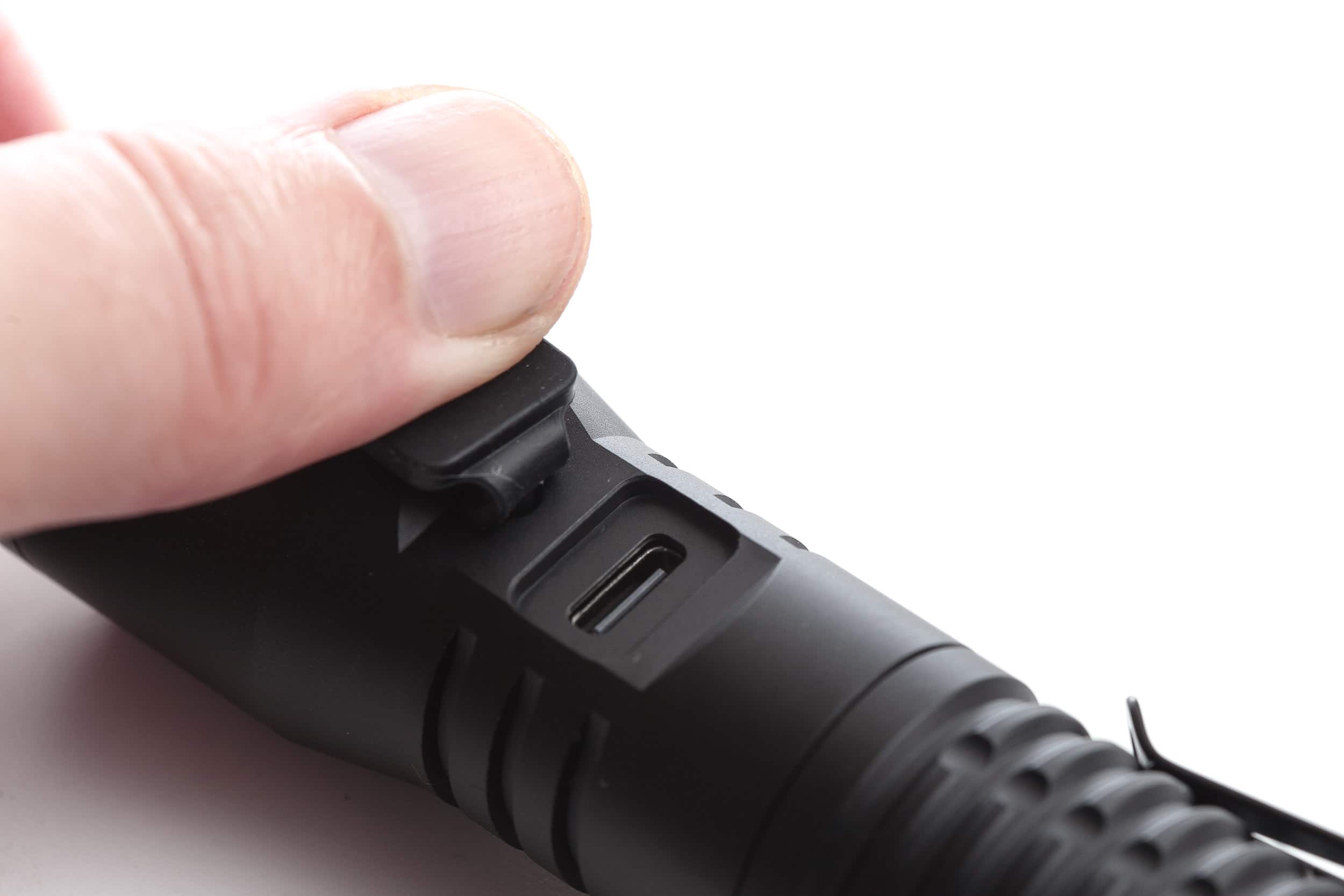
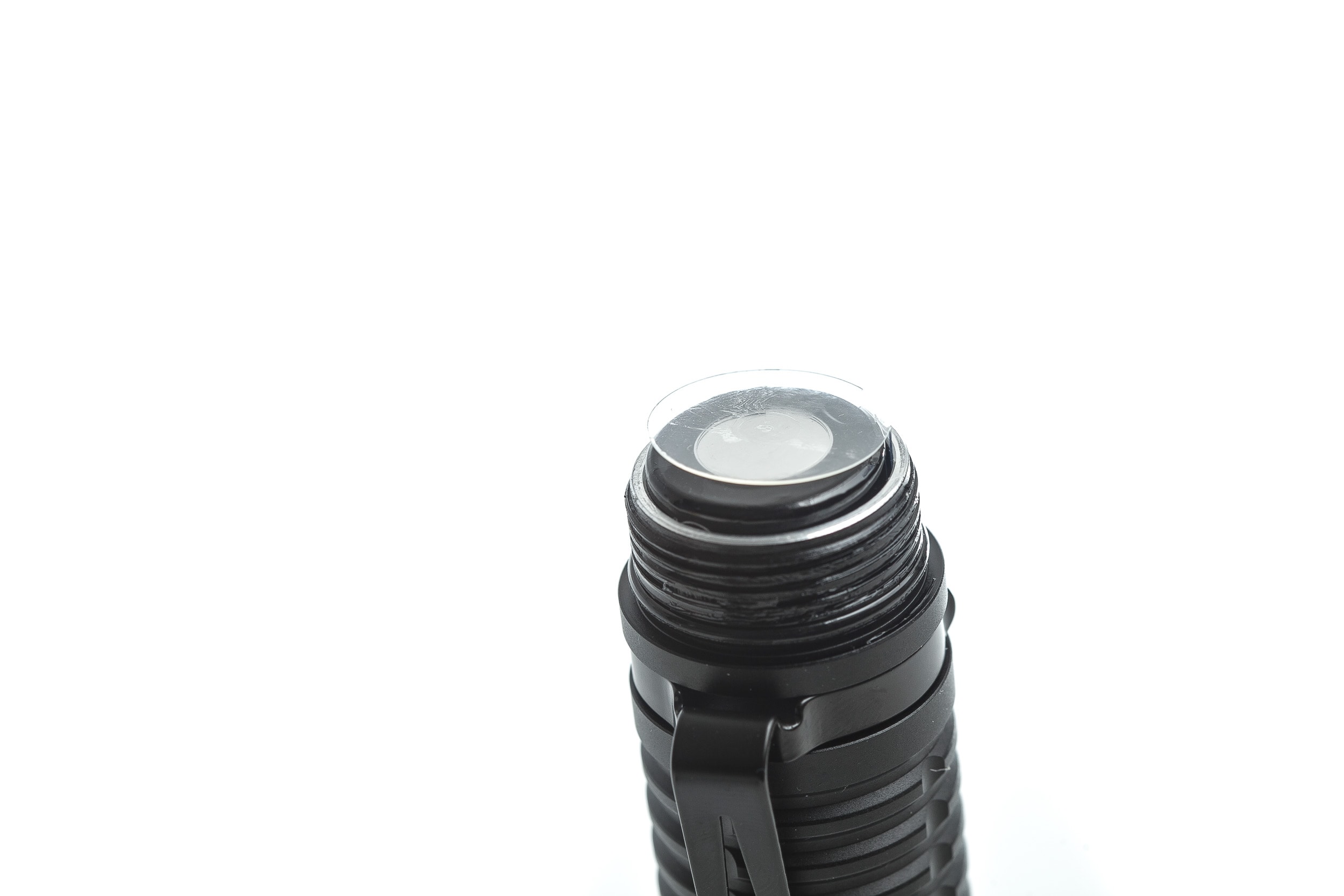
Performance test
This is the gear I use for testing:
| Gear | Purpose | Link to buy |
|---|---|---|
| Hagner E4-X | Measuring beam intensity (throw) | Inquire at Hagner.se |
| 2* Extech SDL400 | Lumens and logging runtimes | Amazon.com, Amazon.co.uk, |
| Leica Disto D2 | Distance for throw measurements | Amazon.com, Amazon.co.uk, |
| Sekonic C-800 | Spectrometer for LED measurements | Amazon.com, Amazon.co.uk |
| Uni-T UTi260B | Thermal Image camera | Amazon.com, |
Lumen measurements:
How Lumens are Measured: Understanding ANSI FL1 Standards How Lumens are Measured: Understanding ANSI FL1 Standards: The ANSI FL1 standards specify that output in lumens should be measured 30 seconds after turning on, as this is the standardized time for measuring brightness according to the industry standard. This is why we focus on this part in our measurements. The ANSI FL1 standards require an ambient temperature of 22 ± 3°C. We record the ambient the ambient temperature to identify potential reasons for any observed discrepancies.The output measurements in this review are based on my homemade integrating spheres, each equipped with an Extech SDL400 Lux Meter. For consistency and accuracy, a calibration light (Convoy S2+ with 249lm and a Convoy S2+ with 261lm) is measured before each set of lumen measurements.
One of the lux meters uses an ND camera filter for high-output lights to prevent the lux meter from maxing out. This is either the Kenko PRO1D ND16 for up to about 80,000 lumens or the Gobe ND32 for anything above.
All of my readings were taken from a fully-charged Speras 3200mAh.
The measurements were taken manually at turn on and 30 seconds. The 10-minute numbers are taken from the runtime graph.
| Mode | Specified | At start | 30 sec | 10 minutes |
|---|---|---|---|---|
| Low | 10 lm | 32 lm | 32 lm | – lm |
| Med | 100 lm | 131 lm | 131 lm | 129 lm |
| High | 400 lm | 471 lm | 462 lm | 445 lm |
| Turbo | 2500 lm | 2700 lm | 2400 lm | 555 lm |
| Turbo at 3.71V | – | 1813 lm | 1682 lm | – |
I try to use rounded lumen numbers, except for maybe Low or Moonlight/Firefly modes.
Turbo at 3.71 was still enough for putting out over 1800 lumens at turn on. This is important for tactical use because you need a high output at any time.
Ambient temperature during testing:
- 17-18 degrees Celsius
Speras EST MAX battery life and runtime
How Runtimes are Measured: Understanding ANSI FL1 Standards About ANSI FL1 runtime standards: The runtime is measured until the light drops to 10% of its initial output (30 seconds after turning on). This does not mean that the flashlight is not usable anymore. The last column shows how long the light actually works till it shuts off. If there is a + symbol, it means that the test was stopped at that particular point, but the light was actually still running. This happens on certain occasions, with certain drivers, firmware, or batteries.Runtime tests were conducted in my 50cm homemade integrating sphere, paired with the Extech SDL400 data logging Lux Meter. Temperatures from the moment the runtime test started.
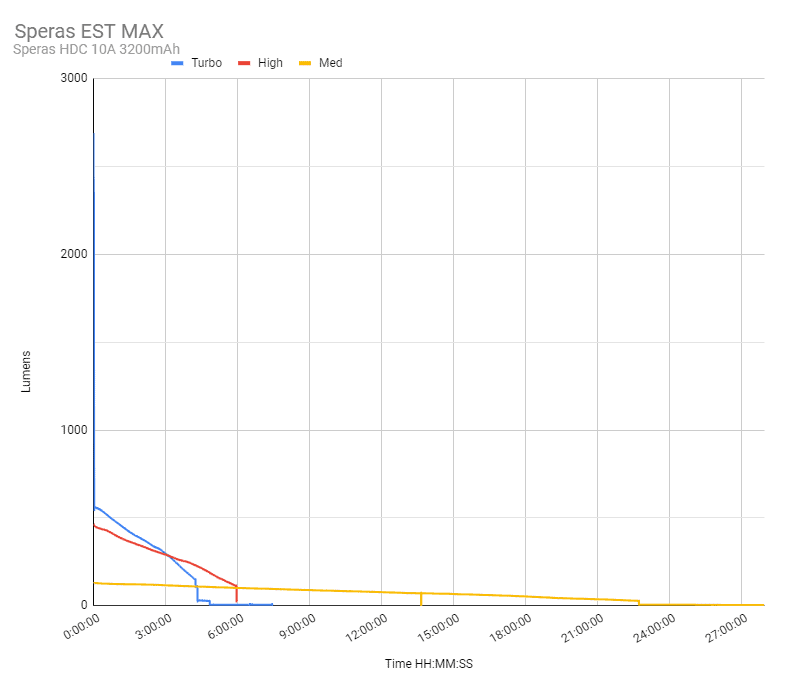
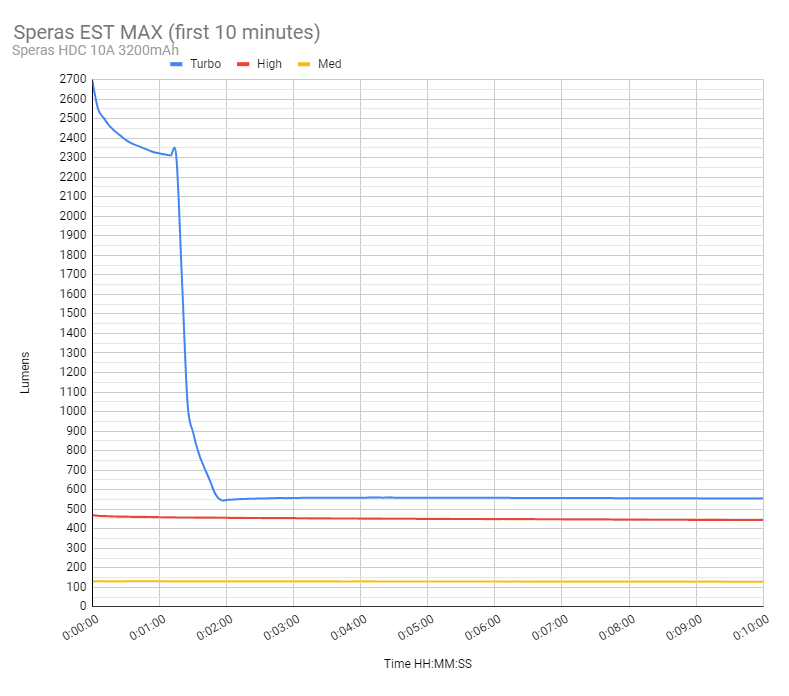
| Mode | Specified | Runtime (ANSI FL1) | Time till shut off |
|---|---|---|---|
| Low | 180h | – | – |
| Med (17.3°C) | 24h | 22h 43min | 27h 57min+ |
| High (17°C) | 5h 48min | 5h 57min | 6h 00min+ |
| Turbo (19°C) | 3h 30min | 3h 34min | 7h 28min+ |
The Speras compared to other 18650 tactical flashlights in terms of output. You’ll notice that the maximum output is quite a bit higher than its competition.
Some of the best Tactical Flashlights we reviewed: These numbers are NOT from the specifications but are measured by our team. I removed the LEP flashlights that could fall into this category but aren’t comparable.
| Flashlight | Max. Output (lm) | @30sec (lm) | Candela (cd) | Distance (m) |
|---|---|---|---|---|
| Armytek Dobermann Pro | 1071 | 1068 | 31,606 | 356 |
| Armytek Predator Pro | 1206 | 1193 | 40,850 | 404 |
| Armytek Viking Pro | 1999 | 1958 | 29,069 | 341 |
| Brinyte PT18 pro | 1981 | 1925 | 45,675 | 427 |
| Brinyte PT28 | 1705 | 1636 | 17,800 | 267 |
| Cyansky P20 | 1740 | 1665 | 14,405 | 295 |
| Fenix TK11 Tac | 1556 | 1488 | 27,600 | 332 |
| Malkoff MDC Bodyguard | 872 | 211 | 2,650 | 113 |
| Nitecore P20 v2 | 893 | 893 | 13,900 | 236 |
| Olight S2R Baton 2 | 1318 | 1289 | 7,500 | 173 |
| Olight Warrior Mini 2 | 1721 | 1658 | 12,250 | 221 |
| Olight Warrior Mini 3 | 1724 | 1643 | 14,075 | 237 |
| Powertac E5R-G4 | 1718 | 1602 | 21,700 | 295 |
| Speras EST MAX | 2400 | 555 | 17,250 | 263 |
| Streamlight Stinger 2020 | 2183 | 2141 | 25,450 | 319 |
| Thrunite BSS v4 | 2336 | 2190 | 14,775 | 243 |
| Weltool T12 | 2000 | 1846 | 126,500 | 711 |
| Weltool T2R | 1589 | 1486 | 41,750 | 409 |
| Wuben E12R | 1426 | 1200 | 10,575 | 206 |
Interactive graphs (hover your mouse over the lines for more info
Here’s an interactive comparison graph with some of the best 18650 tactical flashlights I reviewed.
Mobile phone? Hold your phone horizontally for a full graph. If still not clear, click this link to open the interactive graph in a new window.
And here is the same comparison, but then focused on the first 10 minutes. (Max. output only). Or open this link for a closer look at the graph.
Speras EST MAX peak beam intensity and beam distance measurements
About Peak beam intensity: Understanding ANSI FL1 Standards About peak beam intensity The calculated value of distance in meters at which the flashlight produces a light intensity of 0.25 lux. (0.25 lux is about the brightness of a full moon shining on an object). This means that the intensity has decreased so much, it becomes difficult to see darker objects, or objects that don’t reflect light. The columns ‘Meters’ and ‘Yards’ use rounded numbers.Measurements were taken indoors with a Hagner E4-X Lux Meter. The measurements were taken 30 seconds after turn on.
| Mode | Specified | Measured | Meters | Yards |
|---|---|---|---|---|
| Low | 175 cd | 225 cd | 30 | 33 |
| Med | 825 cd | 900 cd | 60 | 66 |
| High | 3200 cd | 3,250 cd | 114 | 125 |
| Turbo | 19,400 cd | 17,250 cd | 263 | 287 |
Ambient temperature during testing:
- 17.2 degrees Celsius
Beamshots
For the following beamshots, I used a Canon EOS 5D Mk2 with a 50mm lens. Manual settings: ISO1600, 1/4sec, F4, 5000K. It was around freezing point during these beamshots.
The shed is about 65 meters / 71 yards away, and the reflective fence is about 200 meters.
Explore and compare the beamshots, from the following flashlights:
- Speras EST MAX
- NEXTORCH TA30C Max
- NEXTORCH TA20
- NEXTORCH E52C
- Olight Warrior Mini 3
- Fenix TK11
Please note that the following beamshots are mainly intended to showcase the beam pattern and beam quality, rather than overall performance. These images are typically taken directly after activation, and in different seasons or weather conditions, and therefore do not fully represent its overall performance. For accurate performance metrics, such as output, beam distance, and runtimes, you need to look at the performance section of this review.
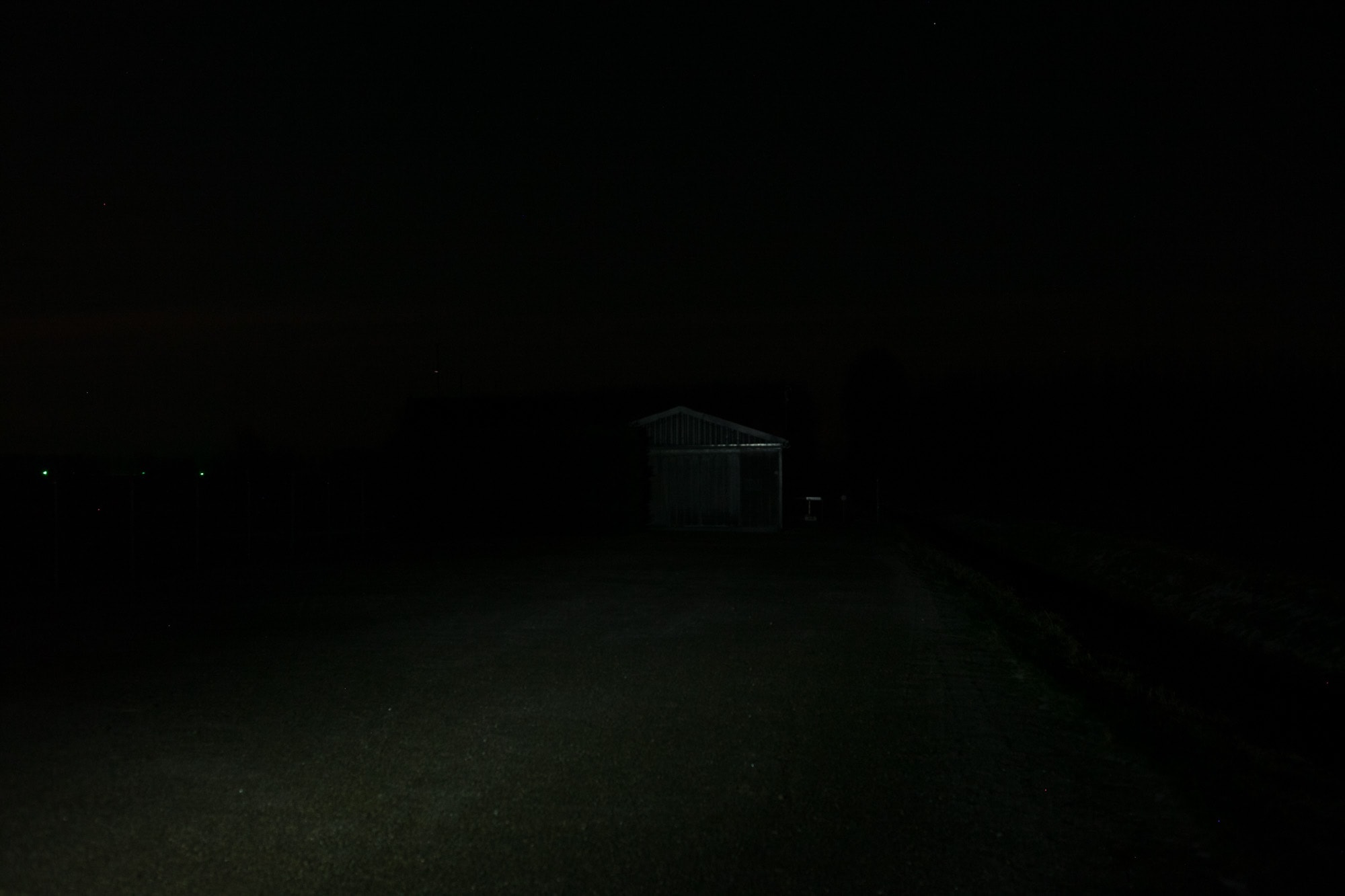
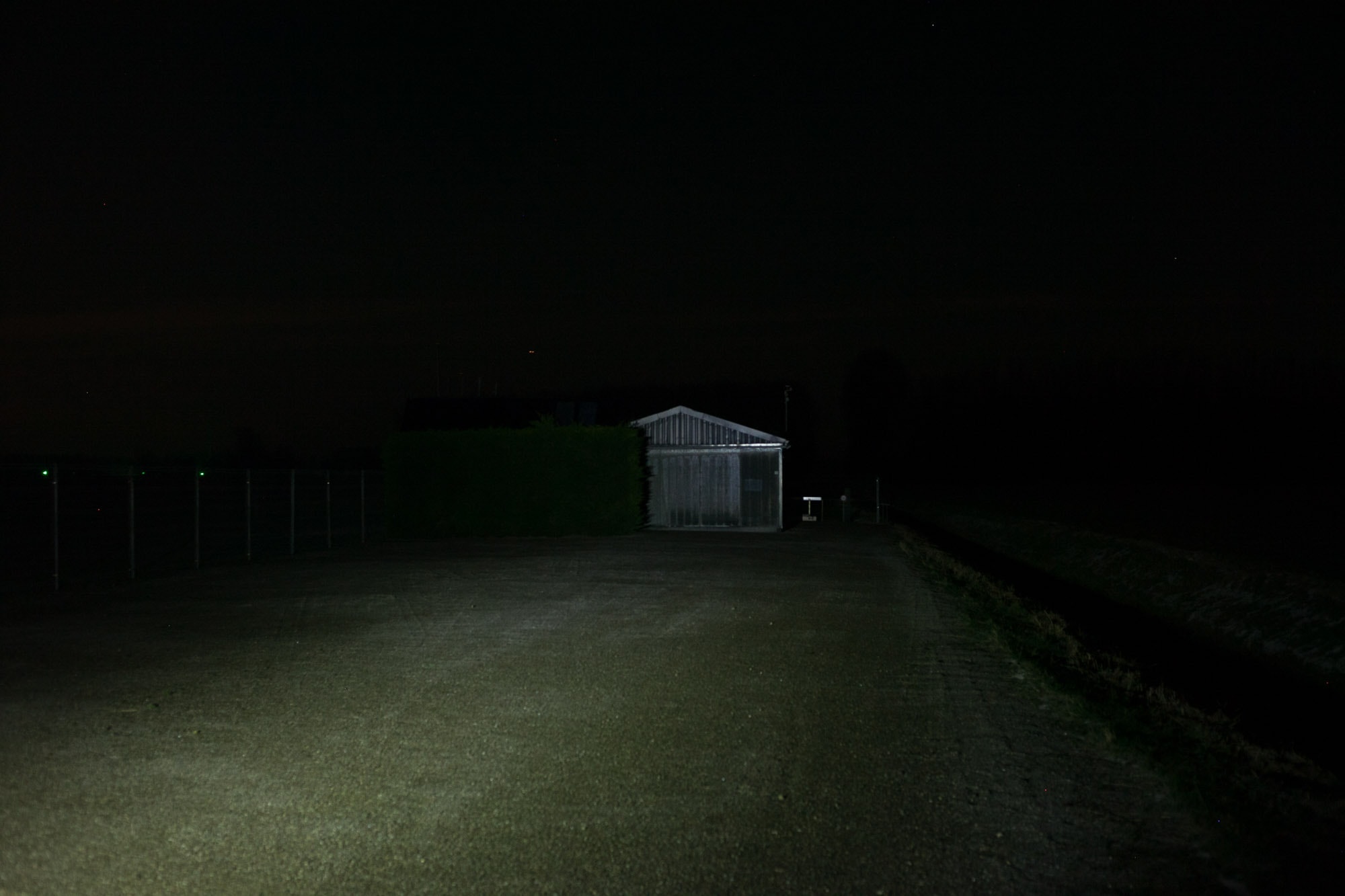
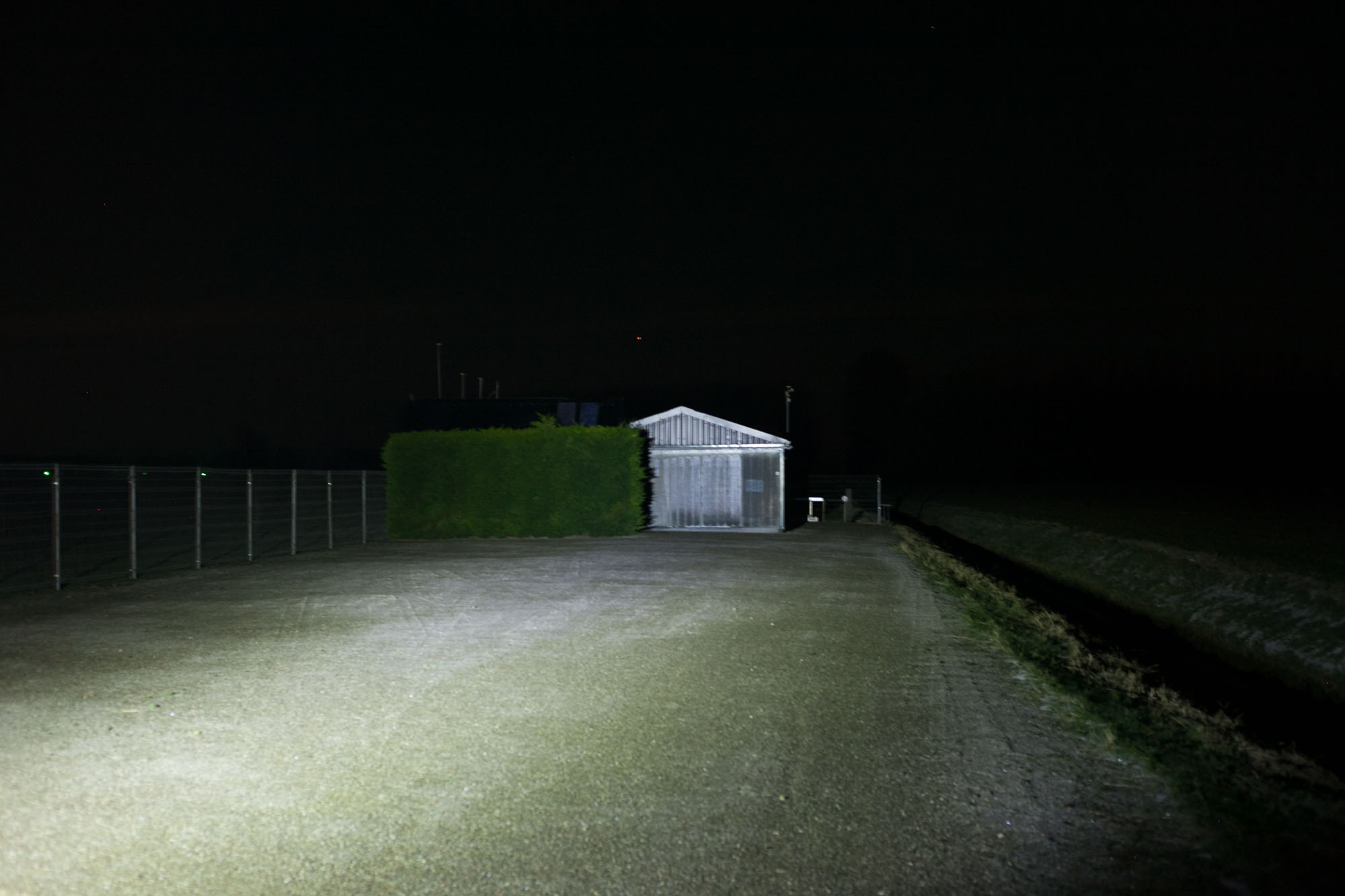
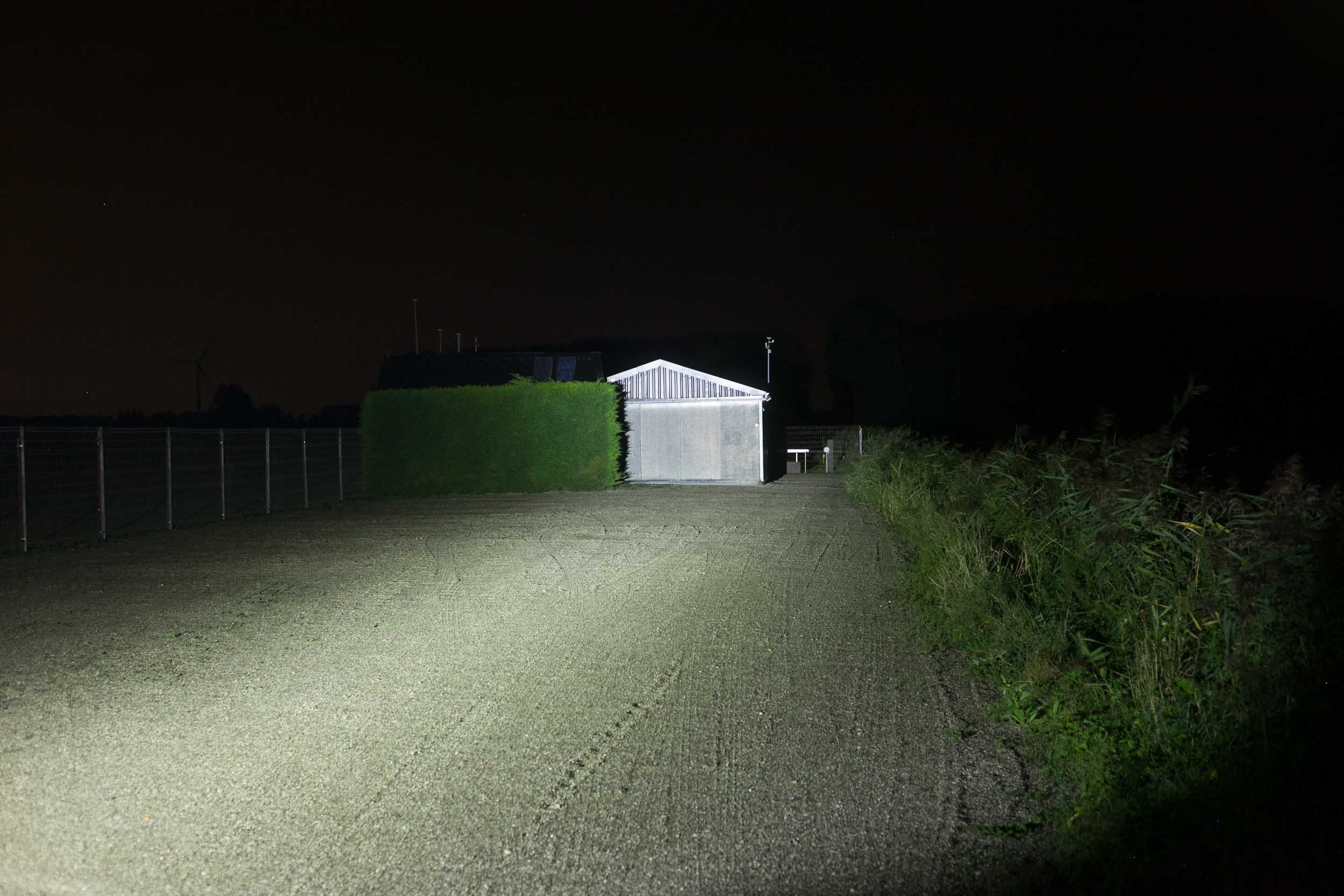
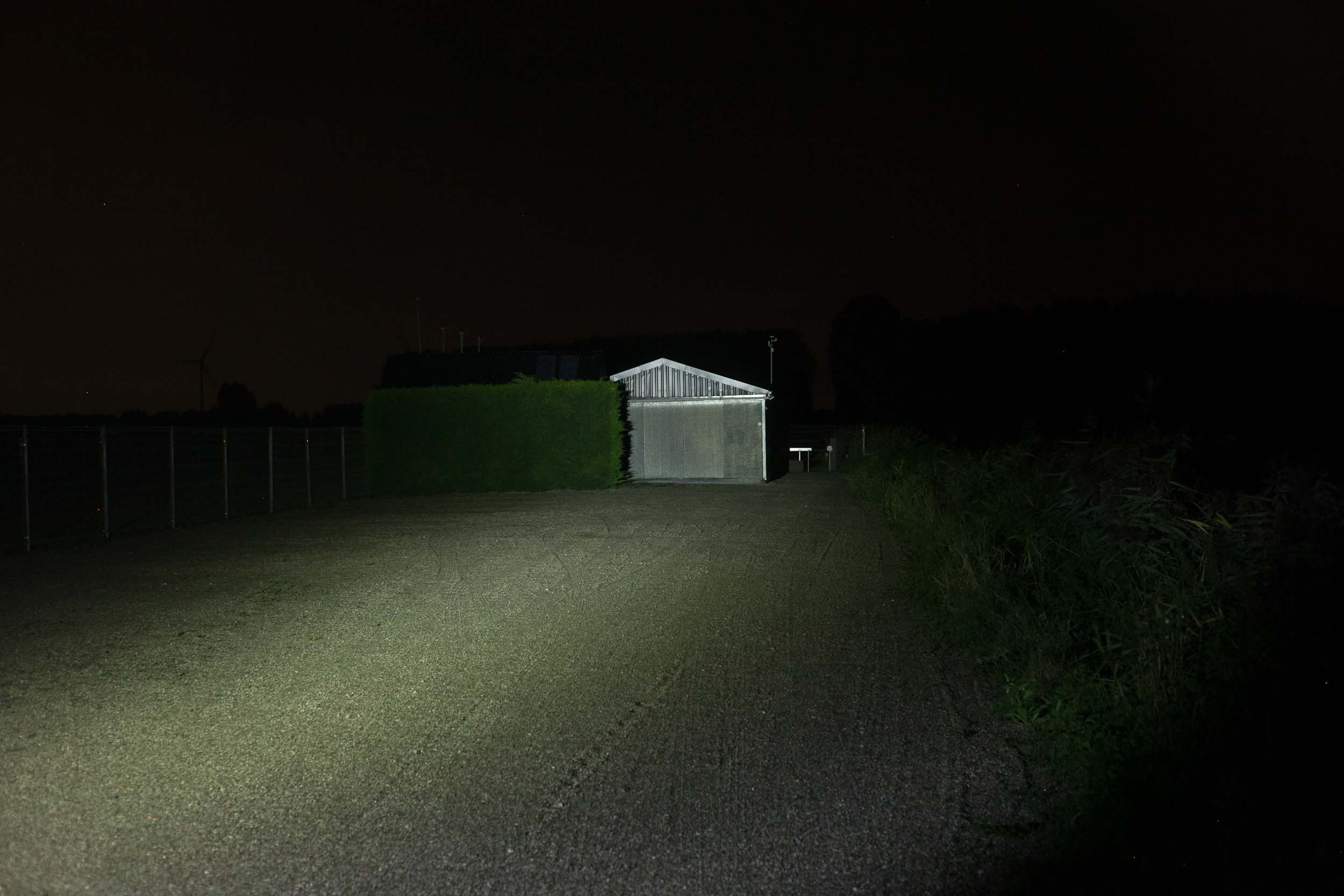
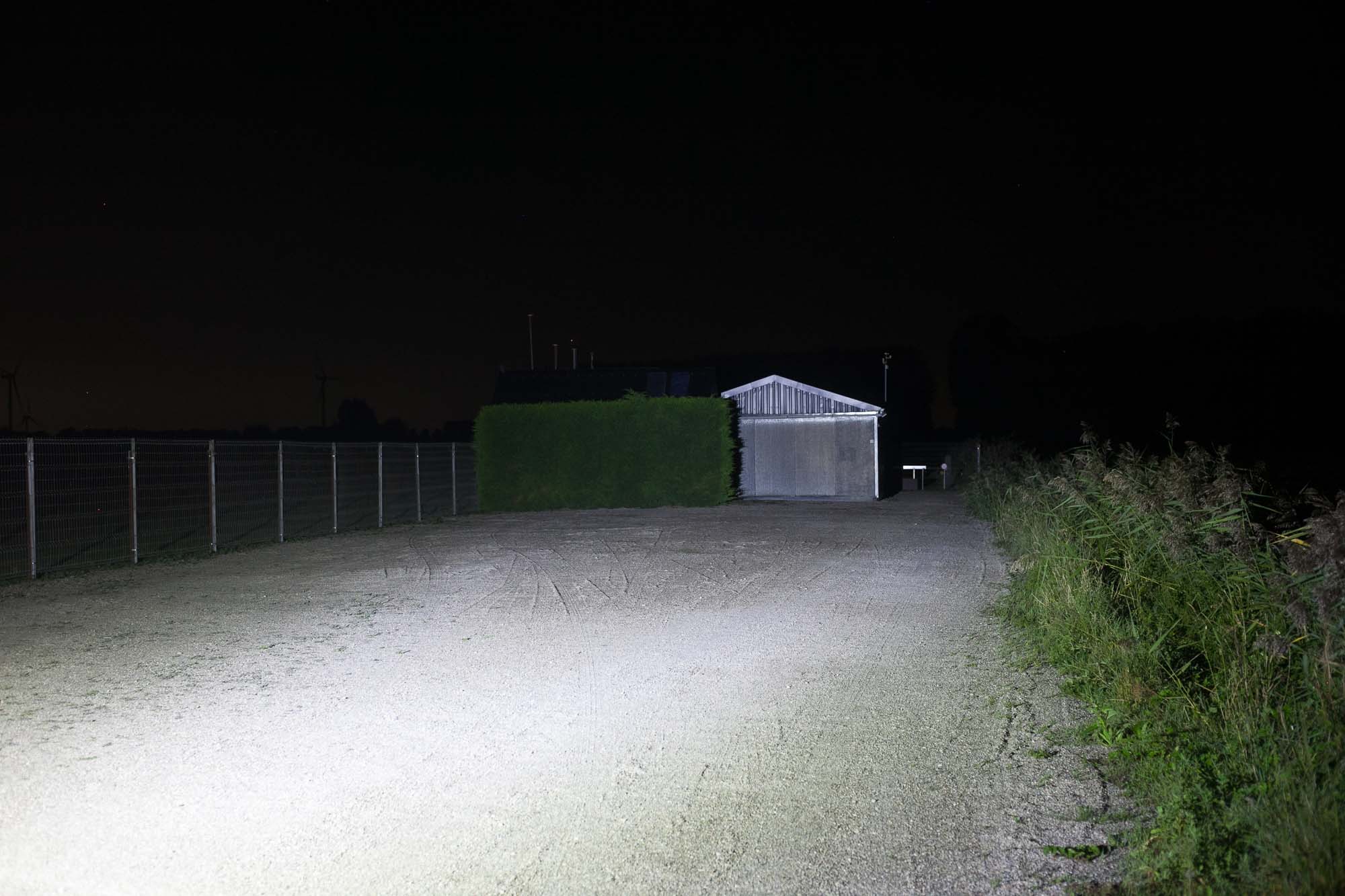
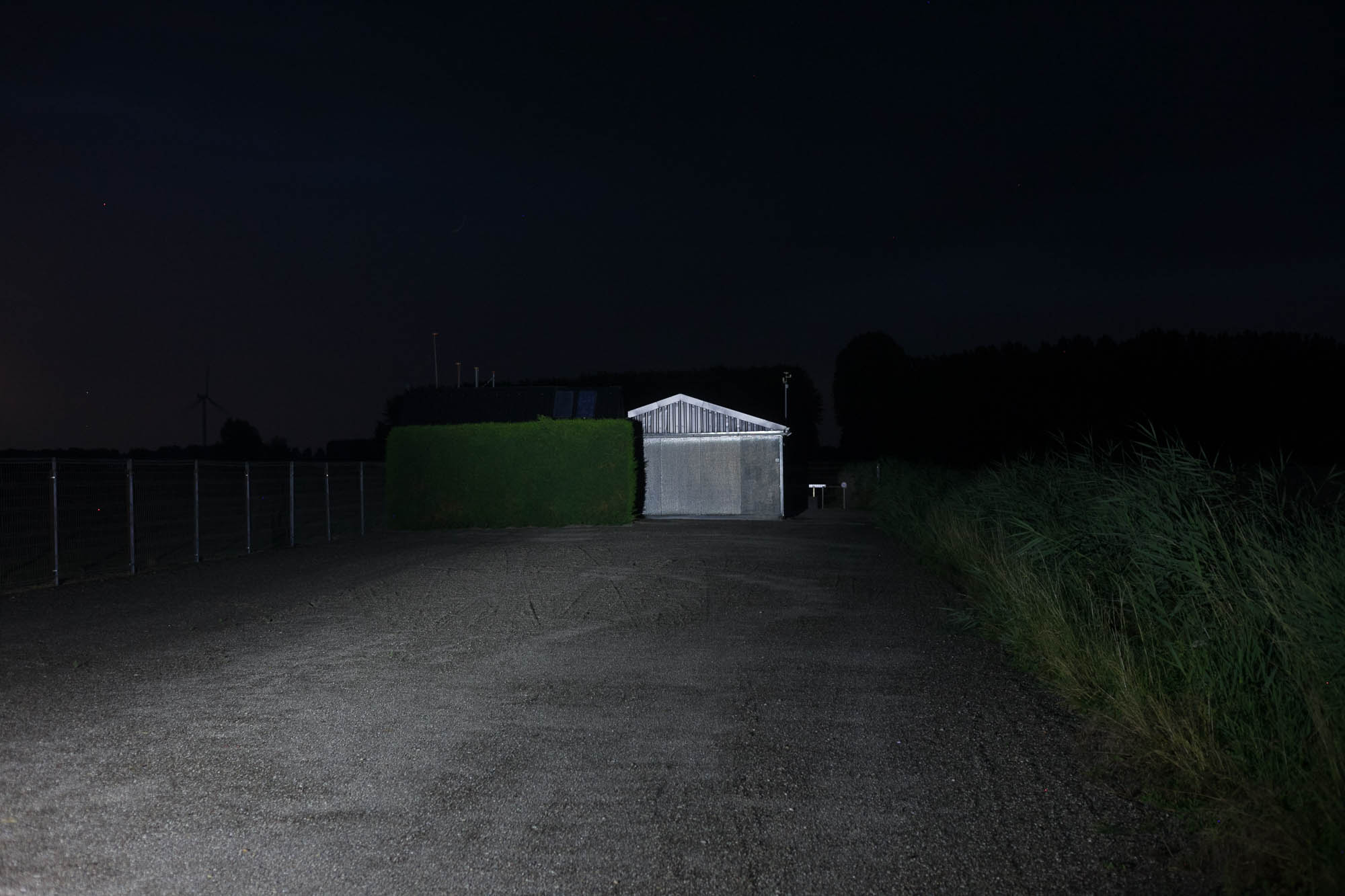
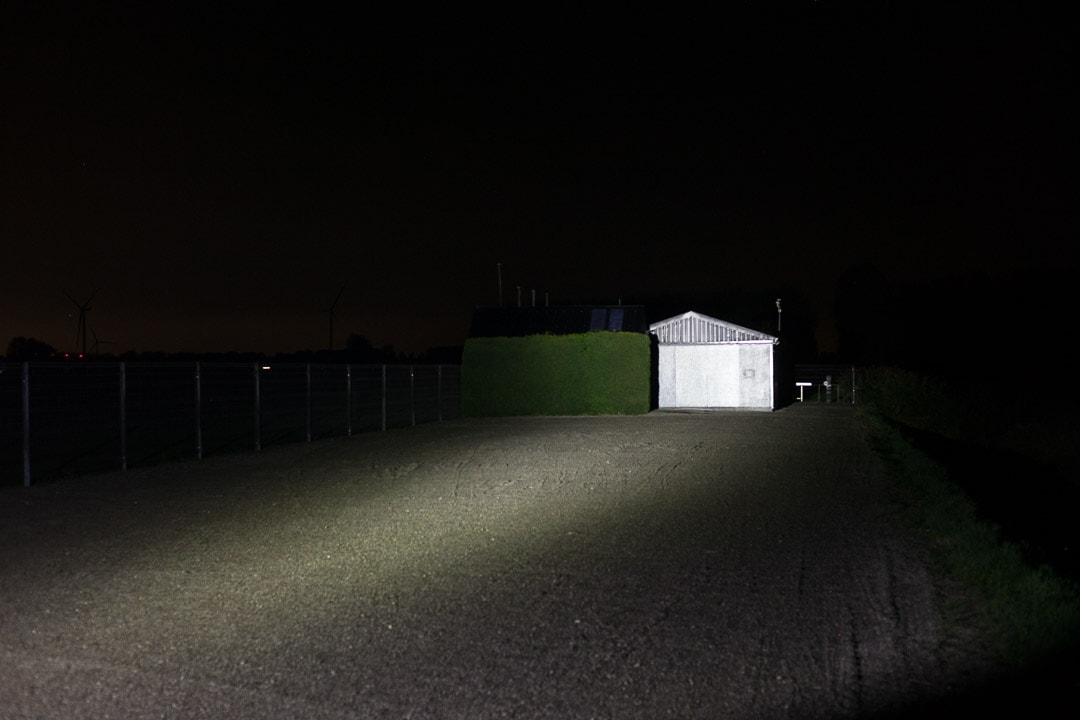
Disclaimer: This flashlight was sent to us for review at no cost by Speras. We have not been paid to review, nor have we been holding back on problems or defects.
Final Verdict
Pros
- One of the brightest 18650 tactical lights
- Dual switch designs
- Tactical rear switch for instant access to Turbo and quick access to Strobe
- Onboard USB charging
- Ready to use package, includes a battery and charging cable
Cons
- Side switch UI is not very user-friendly
- Proprietary battery
- No instant access to Low mode (but not necessary for a tactical light)
- Does not maintain a sustained high output
Explanation on star ratings:
1: Avoid: my phone flashlight would be a better choice – 2: Poor: significant defect or issues; almost unusable – 3: Average: some defects or issues; but still usable 4: Good: recommended (minor issues) – 5: Great: highly recommended

3.5 stars: ★★★⋆
While our star rating provides a reliable indicator, we encourage you to read the full review to make an informed decision based on your own needs and preferences.
The Speras EST MAX is a pretty powerful flashlight with a 18650, combined with the CREE XHP50.3, but it’s a mixed bag. It has a proprietary battery and charging cable, so you don’t need to buy anything else. The customized battery enables the use of both the rear clicky-switch and the electronic side switch interchangeably. This aligns with the design choices from other brands like Olight and Nitecore.
It’s nice that the EST MAX comes with a battery and onboard charging, but the charging process is relatively slow, taking 4 hours and 15 minutes. And even though the output is pretty high for an 18650 tactical flashlight, it does not maintain its brightness very well, as evident in the runtime graphs.
I appreciate the rear switch that provides instant access to Turbo mode at all times (even if you are using the side-switch menu). However, I find the side switch user interface confusing and unnecessary. The long-press for turning on and the single click for turning off is particularly frustrating. If Speras could improve the secondary menu, this flashlight would be a much better option.
I can see myself giving it 4.5 stars if it didn’t have that secondary UI.
Buy your Speras EST MAX here
1lumen selects and reviews products personally. We may earn affiliate commissions through our links, which help support our testing.